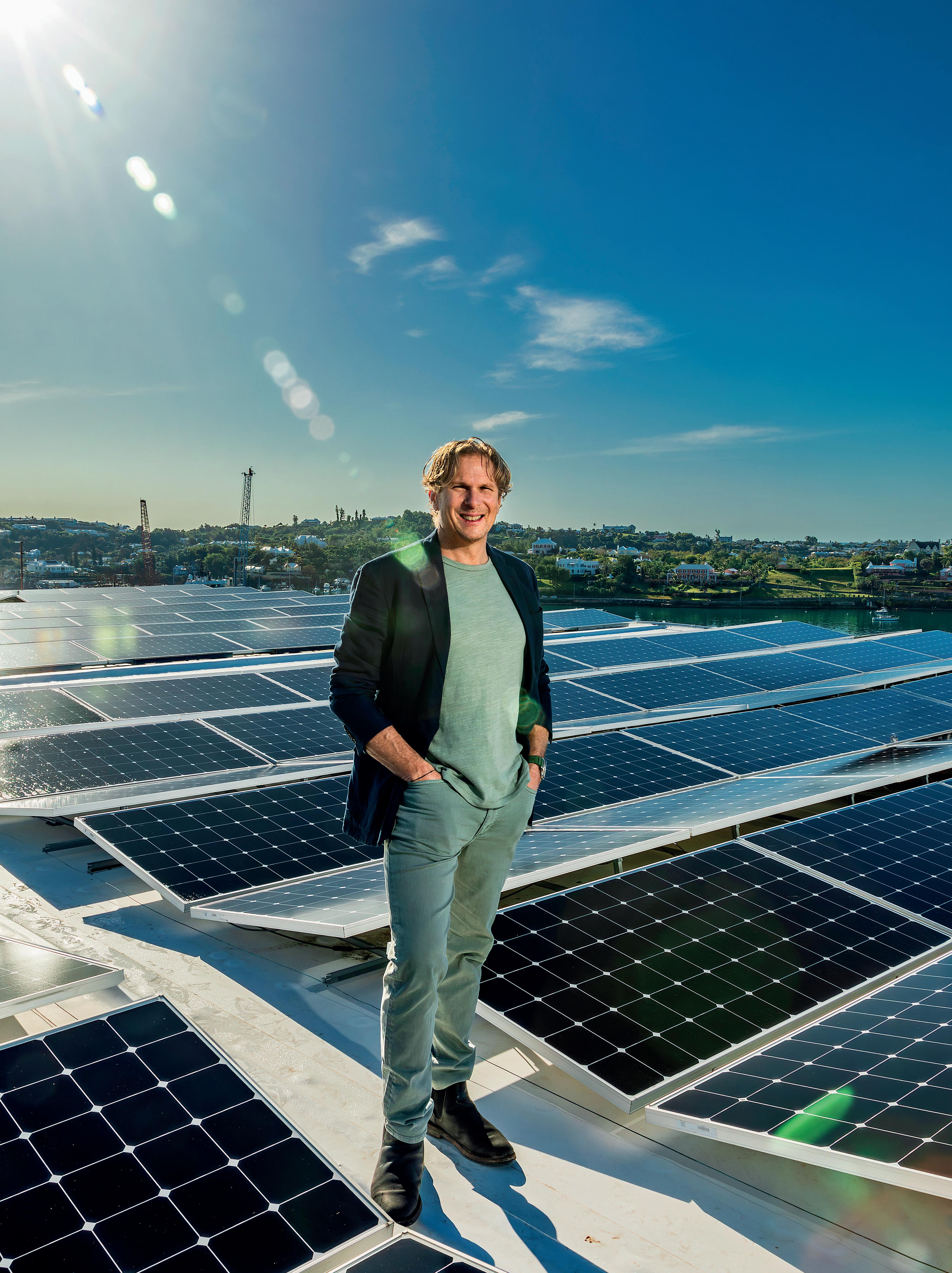
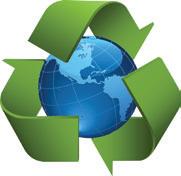
Priceless seventeenth edition 2024 Pass me on for a greener Bermuda Bermuda’s Sea Turtle Odyssey Plastic-Free Pioneers Better Roads for Bermuda BERMUDA’S FIRST GUIDE TO A GREENER LIFESTYLE SunPowered Future: Bermuda’s Solar Surge
We offer:
• 100% financing, apply online and save $200
• A reduced interest rate of 6.5%
• Extended repayment term up to 7 years



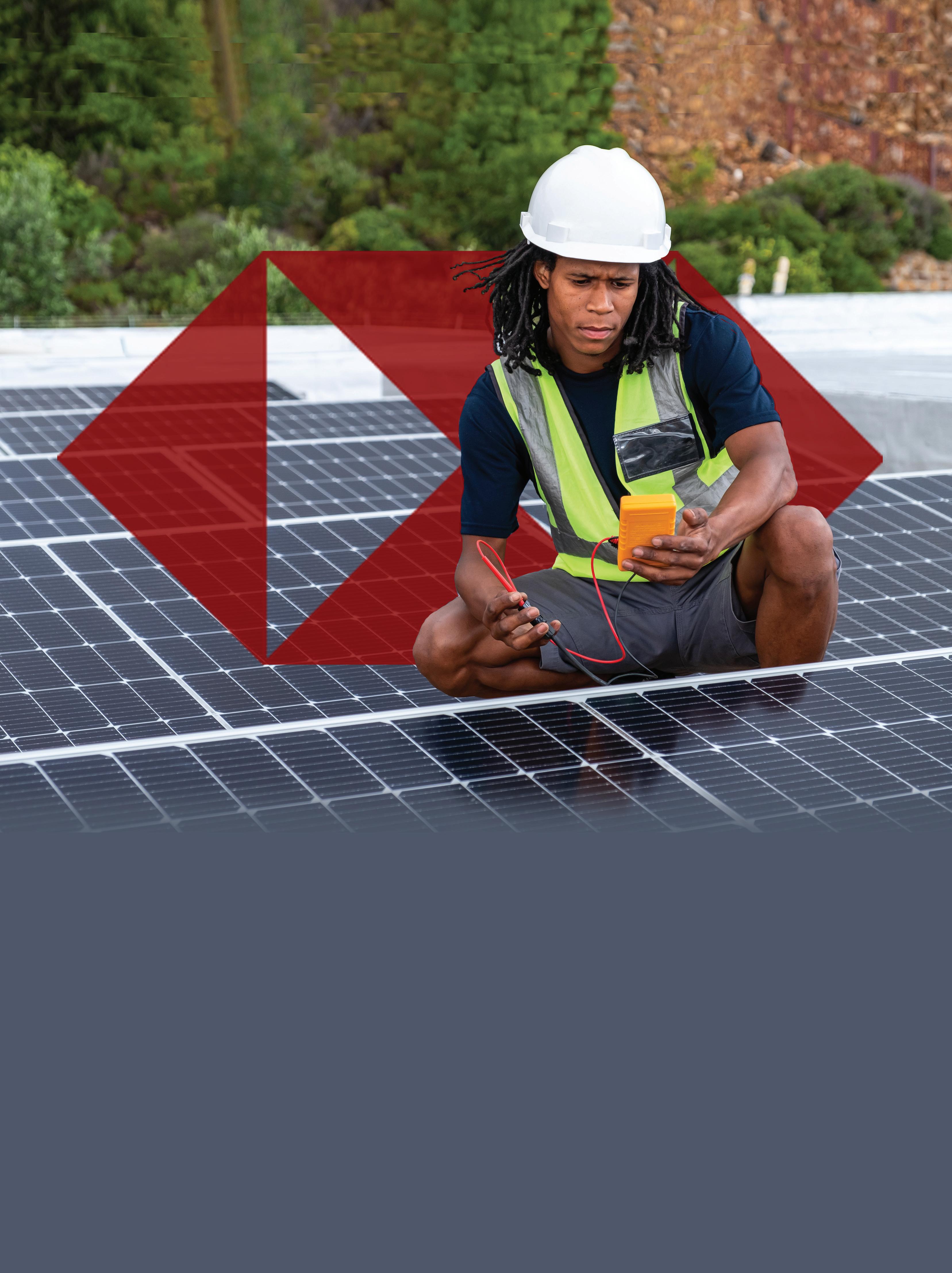
Make your home more energy efficient
the
of solar
to
An HSBC Energy Efficiency Loan can help cover
cost
panels, solar water heaters and other energy saving enhancements
your home and lifestyle, including electric vehicles.
Terms and conditions apply. A loan is subject to formal credit approval with HSBC. Due to market fluctuations, a variable base lending rate may change in the future, which may impact total costs over the lifetime of a loan. Issued by HSBC Bank Bermuda Limited, of 37 Front Street, Hamilton Bermuda, which is licensed to conduct Banking and Investment Business by the Bermuda Monetary Authority. Opening up a world of opportunity Visit www.hsbc.bm/eeloans









Contents
Page 7
AES Shines bright
Page 9
HVAC systems: the green alternative
Page 11
Your shopping cart and climate change
Page 12
BELCO’s energy storage system
Page 13
HSBC’s green loans

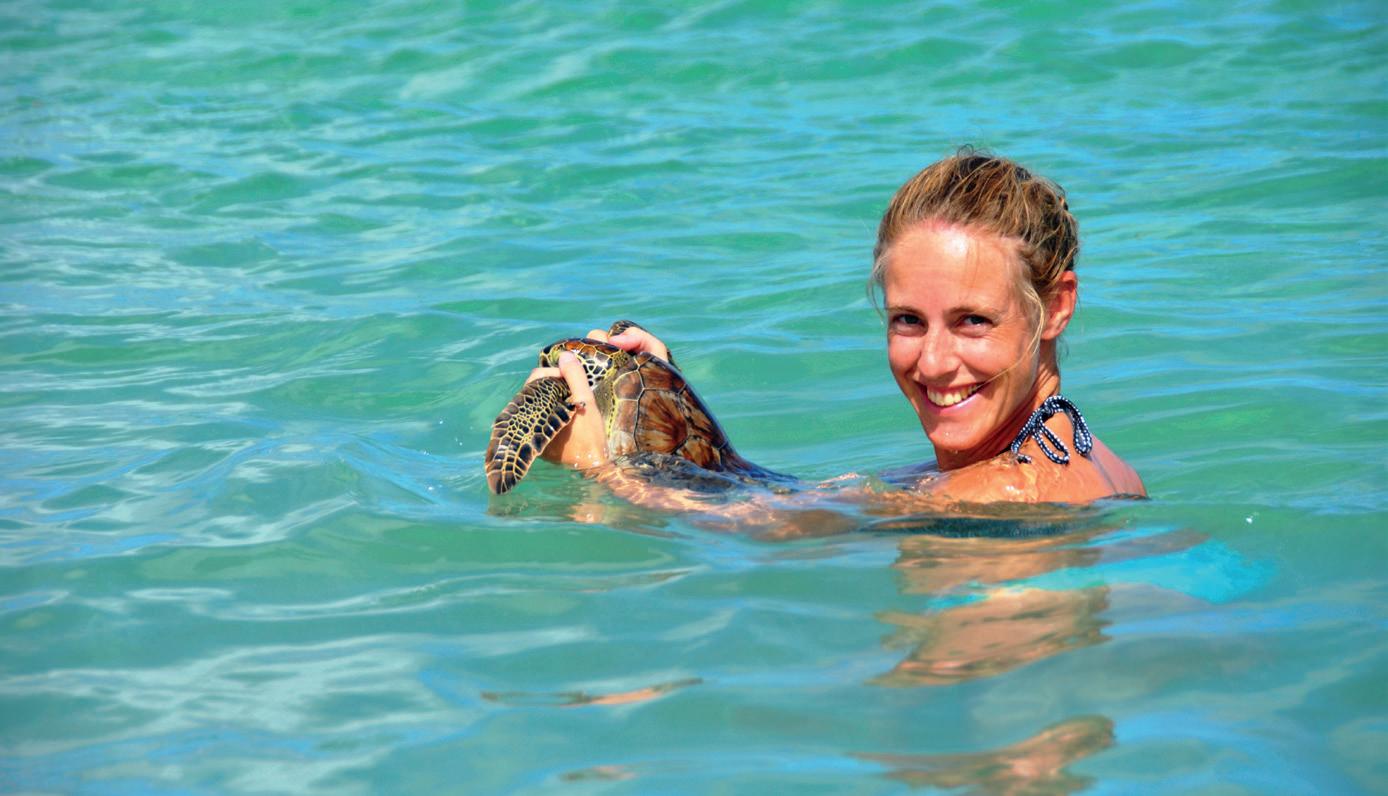
Page 15
Water that’s better
Page 16
Bermuda’s Sea Turtle Odyssey
Page 20
Celebrating Beyond Plastic champions
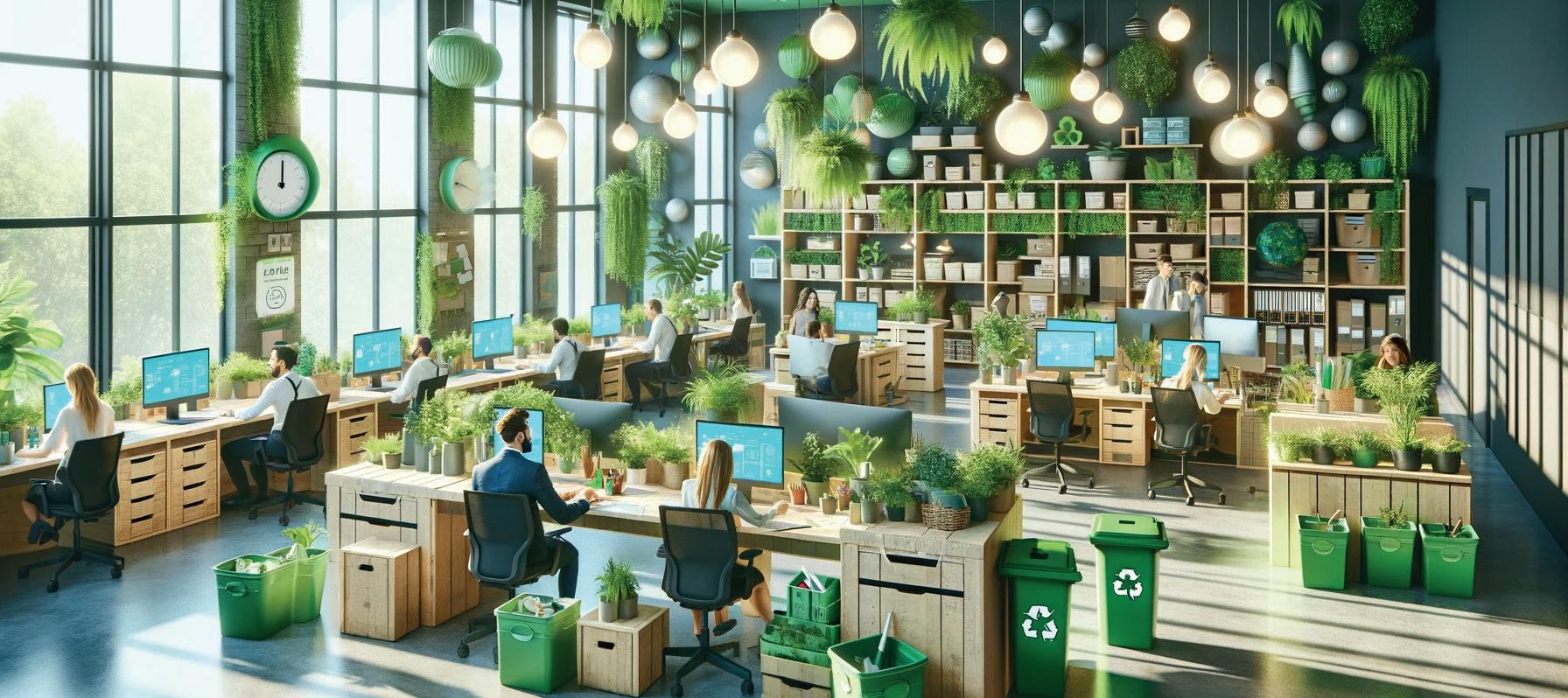

Page 24
Better roads for Bermuda
Page 25
The green office
Page 26
Neta: Bermuda’s newest EV
Page 27
Energy efficient cooling
Page 28
Charitable solar revolution
Page 29
Keep your car cool
Page 30
Reducing your pets pawprint
Going Green 2024 4
GoingGreen contents
Going Green 17th edition 2024 Publisher: Ian Coles Director of Marketing: Lissa Fisher Art Director: Tim Parker Writers: Tim Smith, Annabel Cooper Published by Bermuda Media, Photographer: Stephen Raynor 58 Par la Ville Road, Hamilton HM 11, Bermuda. Published by: Bermuda Media Tel: 441-292-7279. Email: hello@bm.bm www.bermudamedia.bm Cover: Tim Madeiros, Founder and CEO of AES standing on the roof of the Government Administration Building Printed in the US on paper approved by the Forest Stewardship Council with mixed content Views expressed within are those of the respective contributors and not necessarily shared by the magazine or staff. Associated Media: Bermuda Business Visitor, New Resident Guide, Your Future, Bermuda Property Matters, Building Bermuda, House Garden Kitchen and Bath, Your Office and Commercial Space, Health & Beauty, Diversity, Equality and Inclusion, The Bermuda Channel. 25 21 17
Committed to a sustainable path
As one of the world’s largest multiline property and casualty insurers, Chubb has a responsibility to control our ecological footprint in the communities in which we work and live. By introducing numerous environmental initiatives, we strive to reduce our impact on the local environment and are committed to promoting a healthy and sustainable planet. chubb.com

The Chubb Building in Bermuda is LEED Platinum® and is using the LEED Dynamic Plaque™ to manage its building performance. The LEED Dynamic Plaque measures and displays current building performance data spanning energy, water, waste, transportation and human experience. Learn more at LEEDon.io.
©2024 Chubb. Coverages underwritten by one or more subsidiary companies. Not all coverages available in all jurisdictions. Chubb®, their respective logos, and Chubb. Insured.SM are registered trademarks.
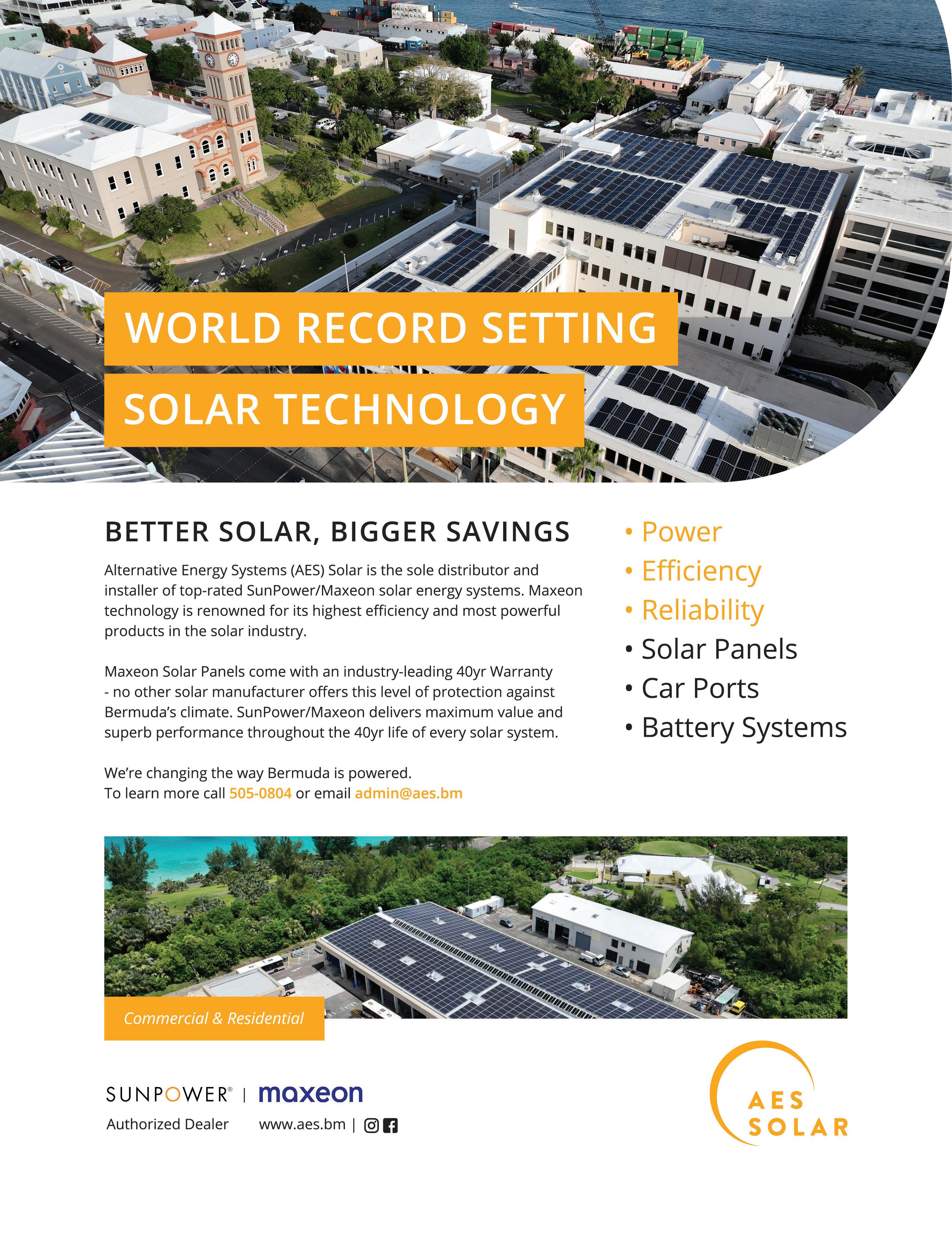

AES Shines Bright: Powering Bermuda’s Future with Solar
AES has established itself as the pioneering force in Bermuda’s solar industry since 2008, surpassing all local providers combined in installed solar PV capacity.
Recently, AES completed significant installations, including solar panels on the Government Administration Building and the adjacent Post Office building, as well as at the Bus Garage on Palmetto Road to support the charging infrastructure for the fleet of electric buses. Additionally, an installation at the Transport Control Department (TCD) is nearing completion. By opting for solar energy over traditional sources like BELCO, the Government stands to benefit from substantial cost savings. LieutenantColonel Burch, the Minister of Public Works, estimates that “the Alternative Energy Systems are forecast to provide annual cost savings over the life cycle of the solar system of close to $500,000 per annum.”
When asked about AES’s success in securing major solar contracts, Mr.
Madeiros attributes it to the superior quality of SunPower/Maxeon panels. He explains, “We’ve conducted real-world comparisons with other panels over the years, and the SunPower/Maxeon systems consistently offer more than double the return on investment. Unlike other panels, which degrade significantly over time, SunPower/Maxeon panels maintain their performance levels. It’s a matter of quality – you get what you pay for. While cheaper panels may seem appealing initially, their long-term return on investment is often substantially lower than that of the SunPower/Maxeon panels we use at AES. SunPower/Maxeon, with their 39 years of solar manufacturing experience, boasts an impeccable track record.”
Maxeon provides a comprehensive 40-year warranty covering both power output and workmanship. Mr. Madeiros emphasises, “The Maxeon warranty not only guarantees power output but also covers the entire panel – including shipping and labor. Even though I’ve
never encountered a structural issue in my 16 years of installing these systems, it’s reassuring to know that such occurrences would be fully covered by the warranty. This 40-year coverage, inclusive of shipping to Bermuda and labor for replacement, is unmatched by any other manufacturer or company in Bermuda.”
The largest commercial solar installations on the island supplied and installed by AES
Wedco 585kW
Gorhams 500kW
Bus Depot 427kW
Government Administration
Building 212kW
Lindo’s 213kW
TCD 150kW
Goslings 136kW
Saltus 70kW
Belco 70kW
Greybar Building 70kW
Vallis Building 69kW
BVS 15kW
Aquarium 11kW
Going Green 2024 7 solar energy GoingGreen
Solar installation on Post Office and Government Administration Building
ATMOSPHERA

The next generation of home air conditioning is here.
Daikin Atmosphera air conditioners are single-zone systems that combine comfort and function with a significantly reduced impact on the environment and increased energy efficiency to offer a sophisticated climate control solution that benefits the earth and lowers costs.
Keep the air in your home fresh, clean and controlled with a residential HVAC system from AIRCARE.
At AIRCARE, excellence is everyday.
R32 Refrigerant
R32 Refrigerant is the next generation of refrigerant. It provides excellent thermodynamic properties, reduced indirect emissions and can consume less electricity over the lifetime of the equipment versus its’ predecessor (R-410).
Hybrid Cooling
Dehumidifies efficiently even in low cooling loads, and maintains dehumidification effect after the target temperature is reached.
Intelligent Eye
An infrared sensor with the ability to sense movement in the room. If the room is empty for 20 minutes, it changes the set point to start saving energy.
292.7342
aircare.bm | info@aircare.bm |
UP TO 27.4 SEER UP TO 13.8 HSPF UP TO 16.3 EER
Ratings
Efficiency
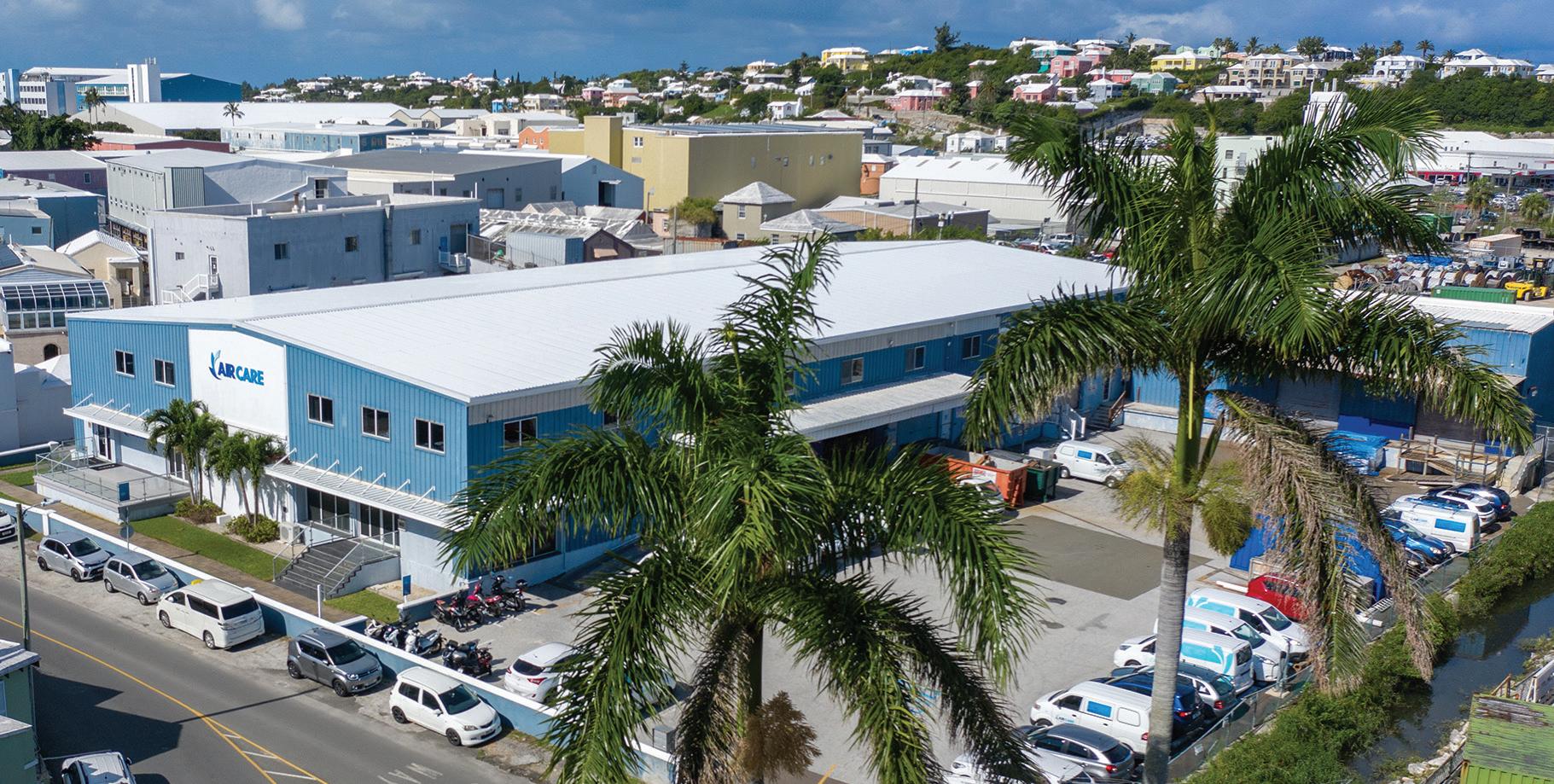
Transforming HVAC Systems for a Greener Future and Cost Efficiency
According to the U.S. Department of Energy, it is estimated that 40% of all U.S. CO2 emissions result from the demand for heating, cooling, and hot water1. While the same study has not been conducted locally, the findings are an alarming indicator that heating, ventilation and air conditioning (HVAC) systems are a large contributor of greenhouse gas emissions regardless of geographic location.
Your commercial and/or residential HVAC system is most likely one of your facility’s largest consumers of energy, which increases costs; and, beyond the source of electricity, your building’s largest contributor to environmental damage through unnecessary emissions. However, with careful thought, planning and action, these harmful emissions can be significantly reduced while at the same time reducing costs. Some of the key factors to consider and address are as follows:
Install Energy Efficient Systems
Replacing/Installing heating and cooling
equipment with modern, energy efficient equipment can reduce energy use by as much as 50%2, in addition to significantly reducing unnecessary CO2 emissions.
Setting Energy Efficient Temperatures
Setting HVAC systems to an optimal, energy efficient temperature – such as 78⁰F in the summer and 68⁰F in the winter – will ensure that your heating and cooling systems are not wasting energy and money while lowering CO2 emissions. Even raising the temperature by 2°F can result in 3-5% electricity savings for the system.
Regular Preventative Maintenance
To ensure your HVAC system is running at optimal efficiency, a regularly scheduled maintenance plan should be developed and executed. The plan will ensure your system’s longevity and efficiency along with ensuring your system is as friendly to the environment as possible. At
1 https://www.eia.gov/environment/emissions/carbon/
2 https://www.regulations.doe.gov/eecompass
AIRCARE, we specialise in the latest energy efficient systems from the world’s leading manufacturers, such as Daikin and Midea, and preventative HVAC maintenance, both of which will result in the reduction of potential issues, emissions, operating costs, and unexpected emergencies.
To minimise emissions and maximise efficiency, AIRCARE works with clients to determine their needs and takes a measured approach that can include full building energy audits and recommendations, integrated building system design, installation, testing and energy management and building automation systems. Once a system has been selected, AIRCARE technicians can take care of full system management, testing and certification, create custom controls, alarms, and notifications and provide detailed energy usage analysis and reports which ensures proven cost savings.
For more information on how to improve your HVAC efficiency visit aircare.bm or call 292-7342.
Going Green 2024 9 energy GoingGreen

Make your own compost and have healthier soil.
The EarthMachine helps reduce your impact on the environment and saves you money while providing you with gallons of free compost.
Available ex c l us i v e l y t h r o u g h the Waste Management section of the Ministry of Public Works for $80.
Email recycle@gov.bm to purchase one.

 GOVERNMENT OF BERMUDA Ministry of Public Works
GOVERNMENT OF BERMUDA Ministry of Public Works
Connecting the dots
Vanese Flood Gordon, Education and Enforcement Officer (Waste Management) explains the connection between your shopping cart and climate change
Talk of climate change can evoke a range of emotions or actions depending on the individual. For some, the best solution lies in a head-on attack through the purchase of solar panels for the home or an electronic vehicle, or both. For others, these solutions may seem overwhelming, out of reach financially or both. But what if I told you, that while renewable energy is a great solution, there are simple, everyday actions we can all engage to help in the fight to diminish climate change? These simple actions require just two things conveniently located at the end of your arms, your hands!
The expression “Reduce, Reuse, Recycle” is widely known. Chances are you’ve said it on more than one occasion, but do we really understand exactly what these 3Rs mean, why they are said in this order, and just how impactful applying these principles can be whenever we shop?
Most households do a weekly grocery shop, where most of the household waste originates – what we take off the shelf and place in our grocery cart with our two hands, directly impacts the climate. Food packaging serves an important role in safeguarding our foods but is also a marketing tool that encourages excessive purchasing of overpackaged items which in turn generates the bags of waste we all take to the curb on our weekly waste collection days. In other retail settings, our purchasing is influenced further by marketing and the need to keep up with new trends. Fast fashion and other impulse purchases carry a huge carbon footprint. The production and transport of all this packaging and its contents, along with wasteful purchasing patterns, is a major source of CO2, a direct contributor to global warming.
Overlooking the first two Rs, most of

us naturally gravitate toward the third R, Recycle. It seems so easy. In Bermuda, you simply put your tin, aluminium, and glass into a blue bag, place it on the curb once every two weeks and it magically disappears off to the Material Recovery Facility, aka the Recycling Centre in Hamilton Parish. But while recycling is great, it is the third best option in reducing our impact on the environment. The other two Rs – Reduce and Reuse quite simply are the better options. Buying less stuff or ‘reducing’ is the most powerful tool we have to help the environment. It’s important that we recognise that our current level of consumption is unsustainable as we continue to consume more resources than the Earth can renew. The Story of Stuff tells us that eight times an items weight in waste is generated during its production. This makes the amount of waste one sees here in Bermuda, just the tip of a giant waste iceberg!
Recent consumer surveys by Keep Britain Tidy indicate that we need to shift our focus from recycling, which is good, to waste prevention which is better. The things we buy directly fuel overuse of our planet’s natural resources and the emission of dangerous levels of CO2 into the atmosphere. Shifting to a waste
“Buying less stuff is the most powerful tool we have to help the environment”
prevention mind-set is one of the most effective tools we have readily available to fight climate change. Think when you buy. You will save money while reducing your carbon footprint and helping the health of our planet.

cc GoingGreen 11 Going Green 2024 environmental impact Green
Ever Wondered Why Energy Storage Is Key to the Success of Renewable Energy?
Every system in life should be balanced, from your bank account balance to an island’s energy balance. Energy storage is one method to balance our energy system, which is why Bermuda Electric Light Company Limited (BELCO) installed the Nolan Smith Battery Energy Storage System (BESS). The BESS provides another costeffective method to balance the energy demand of the people of Bermuda.
With a fluctuating renewable energy supply, energy storage is critical to secure the energy system. Imagine a day with cumulus cloud cover1, passing over the island causing solar fluctuations. BELCO is responsible for producing energy when the sun is not shinning on the solar panels.
It is the equivalent of a tandem bicycle with two riders trying to maintain speed (+/- 1%) whilst riding over the hills and flats. Now imagine the back rider messing around, pedalling hard, pedalling soft, then not at all and everything in-between with no rhythm, this is what solar energy appears like to the grid. The front rider must react now, to not only the hills and the flats of the road, but also the variability of the back rider, whilst also meeting strict speed regulations. One solution to the front rider is to use an electric tandem bike with battery storage that smooths out the variations from the back rider and matches the demand of the road, letting the front rider carry on pedalling as efficiently as possible.
As we move towards more and more renewables the rider at the back becomes more powerful, and hopefully one day is the main driver of the bicycle. Then the key to successful renewable energy adoption will be adequate storage for quick and easily dispatchable energy to deal with large fluctuations. Imagine the tandem cycle where the back rider is so powerful, they can push the bicycle and charge the battery sometimes and let the battery power the bike the rest of the time. Eventually to a point that the front
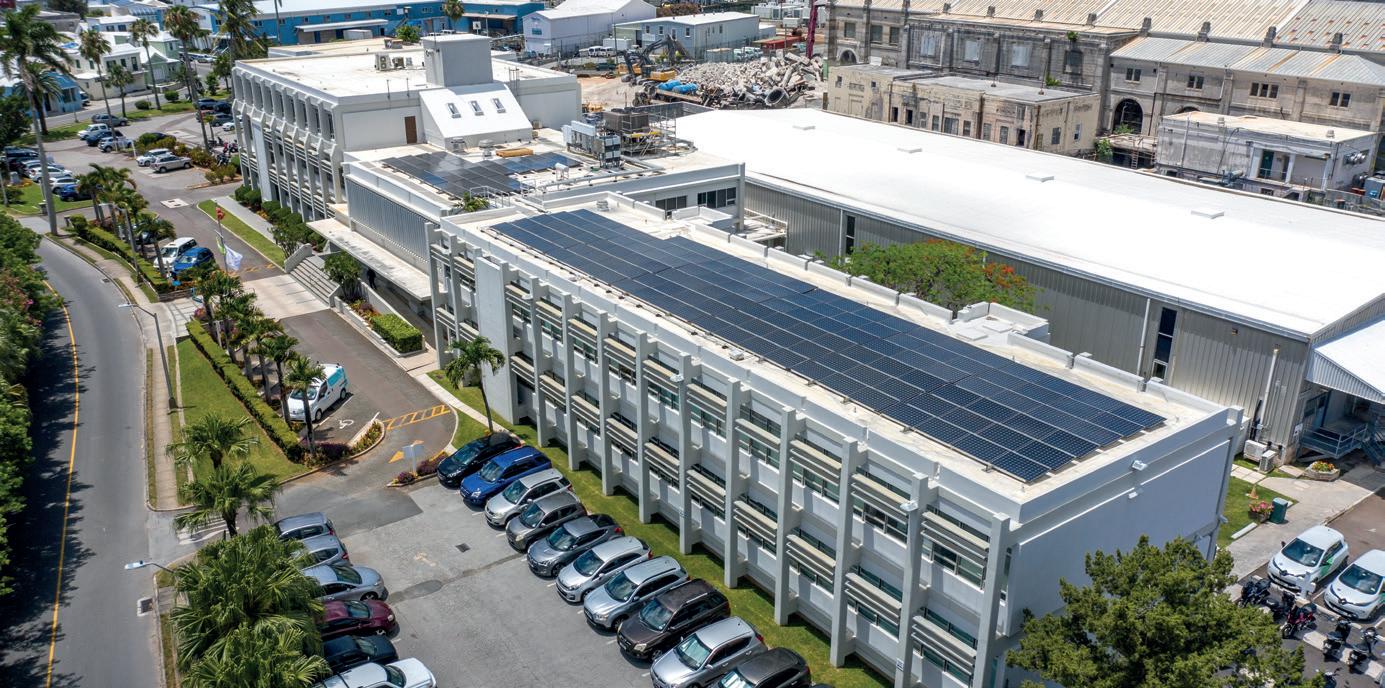
rider is doing nothing but controlling the battery and not burning any fossil fuels. It is not likely that a single rider in the back is powerful enough to do this, which means we need a special tandem bike with many more riders in the rear with different renewable energy sources to drive the bike and charge up the energy store if the front rider is never to burn fossil fuels. Energy storage for utility scale energy systems is not limited to batteries, but includes technology such as pumped hydropower storage, spinning flywheels, large capacitors, flow batteries, thermal storage and compressed air energy systems to name a few.
Energy storage can be broken down into four main energy groups, gravitational and mechanical, electrical and electrochemical, thermal, and chemical. Gravitational and mechanical includes systems that store potential energy such as pumped hydro and gravity-based storage systems. Mechanical systems also include flywheels, compressed air, and liquid air storage. Electrical and electrochemical systems include rechargeable batteries, supercapacitors, and flow batteries. Short term solar variability such as cumulus clouds can be met by spinning flywheels and capacitors that have high power outputs for short durations, however large cloud cover can last days and requires high power storage for long durations. Thermal energy technologies typically
take advantage of the phase change of materials, for example cold energy is stored as ice, whilst hot energy is stored in molten salt energy. Finally, chemical energy storage includes natural gas, oil, coal, and hydrogen. It is important that the lifetime cost and operability of the storage system meets the needs of the renewable energy fluctuations and demand profiles but is cost effective, safe, and long lasting.
Batteries are a common form of energy storage, and the technology has developed a lot over the past century. There are a range of different battery chemistries, including but not limited to lead-acid, lithium-ion and sodium-sulphur. All batteries are a form of dense energy storage and require proper handling and operational safety measures. The BESS has a 10MW capacity with 5MWh of energy storage and can output 10MW for 30min, or 5MW for 1 hour. To provide power for one business day in Bermuda (9am to 5pm), the system would require over 130 BESS batteries fully charged at 9am just to get to 5pm, if we assume an average load of 82MW. Abu Dhabi have an NGK 108MW/648MWh NAS battery which can deliver the peak demand of Bermuda for 6 hours. Based on the NGK brochure, this would take approximately 6 acres of land.2
In summary, energy storage Is essential to the success of Renewable Energy, but takes up space, and that is one of our most precious resources on the island.
Going Green 2024 12 GoingGreen energy
Types of Clouds | NOAA SciJinks – All About Weather
1
2 https://www.ngk-insulators.com/en/product/nas-configurations.html
An offer that puts the environment first

Are you wrestling with the everincreasing cost of gas for your car or your hefty utility bill? Not only do they put a big dent in your wallet, the fossil fuels they use are also a ‘double hit’ to the environment and climate change.
By installing energy efficient, renewable energy features in your home, you can lower your energy bills and lower your carbon footprint at the same time. Some of the products you should consider include energy efficient appliances that use less electricity than
standard models, such as refrigerators, washers,dryers, and dishwashers, solar panels, electric cars and scooters.
But how do you pay for these ecofriendly items? HSBC Energy Efficiency and Electric Vehicle Loans are a great solution. HSBC Energy Efficiency and Electric Vehicle Loans can help you afford the up-front costs of energy solutions, so you can benefit in the long term.
Use for a variety of energy solutions
The Energy Efficiency Loan must be wholly used for the purposes of installing energy efficiency, renewable energy, and clean transportation equipment at home.
Electric Vehicle Loan refers to loan products that are solely for the purpose of financing customers to purchase electric vehicles or plug-in hybrid vehicles. Electric vehicles are vehicles that utilise rechargeable battery packs and electric motors. Plug-In hybrid electric vehicles are vehicles that combine a conventional internal combustion engine system with an electric propulsion system that utilises a rechargeable battery pack.
100% financing
For qualified applicants, HSBC Energy Efficiency and Electric Vehicle Loans are available with a zero-down payment on the full amount of your loan. Plus, you can borrow for up to seven years, which is the longest available term HSBC offers on an unsecured loan.
Save $200 when you apply online
By applying for HSBC Energy Efficiency and Electric Vehicle Loans using online banking, you can have the $200 negotiation fee waived.
To apply for HSBC Energy Efficiency and Electric Vehicle Loans visit HSBC.bm or telephone: 299 5959
Going Green 2024 13 environment GoingGreen



Bottled Water that’s Better for Bermuda
Bermuda Waterworks explains why its bottled water is an excellent choice for those concerned about our environment
The bottled water industry was going green long before the term became popular. Through its home and office segment, the industry has demonstrated a significant impact on reducing pollution through the repeated use of its bottles until their life cycle is completed.
Bermuda Waterworks manufactures bottled water in reusable 3- and 5-gallon containers. The company repurchases used bottles in order to encourage clients to return them in good condition for a full credit on their next transaction.
Empty bottles should only be refilled with Pure Water. They are not meant to hold trash or other liquids such as drink mixes — a popular choice at picnics. A bottle that has been used for drink mix cannot be reused by
Bermuda Waterworks. The company encourages clients to contact them if they need rejected bottles for any sports or fundraising events.
Bermuda Waterworks’ most popular water cooler is Energy Star rated. These coolers help residents and businesses reduce their energy bills, and can help make a difference for the environment. This is because products that earn the Energy Star prevent greenhouse gas emissions by meeting strict energy efficiency guidelines set by the US Environmental and Protection Agency. These energy efficient coolers are available in room temperature/cold and hot/cold models. The company also sells water-dispensing equipment that do not require any electricity. There is the very popular dolphin pump, where water is
manually pumped out of the bottle. There is also the compact cradle and valve that sit perfectly on any counter. The ceramic crockpot is another decorative option. All of these models dispense water at a pleasant room temperature.
Bermuda Waterworks also provides piped metered water, 100% of which is manufactured by reverse osmosis. This process requires electricity. However, over time, new and energy-efficient equipment has been installed in order to reduce our consumption of fossil fuels. The company encourages residents to use its utility water wisely as a top-up supply. A new self service vending machine has been installed. It dispenses Pure Water and Pure Ice. Clients can bring their reusable empty bottles and purchase water. Clients can even reuse their cap if they wish. Going green made easier with budget friendly options.
For more than 85 years, Bermuda Waterworks has manufactured water to meet the island’s growing needs. The company will continue to do its part in making water production as green and efficient as possible.
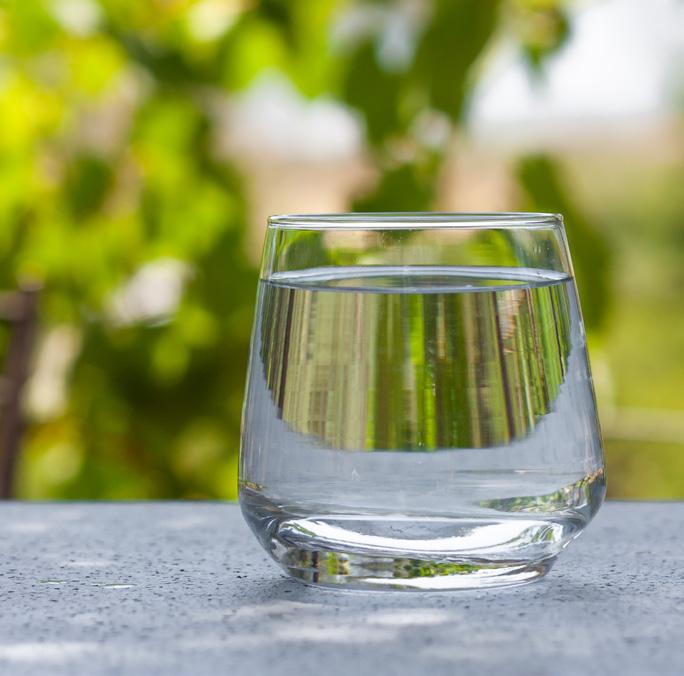
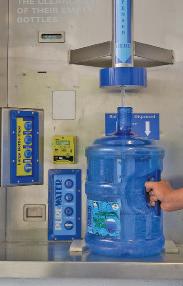
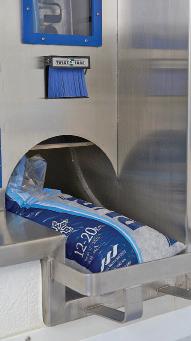




15 Going Green 2024 water GoingGreen
HOURS OF OPERATION 32 Parsons Lane, Devonshire Tel: 299-PURE E-mail: purewater@bwl.bm Web: www.bwl.bm MONDAY - FRIDAY: 8 a.m. – 5 p.m. (OFFICE, RETAIL SHOP & DRIVE THRU) SATURDAY: 9 a.m. – 1 p.m. (DRIVE THRU ONLY) PURE WATER & PURE ICE VENDING MACHINE Make sure you check out the easy to use VENDING MACHINE IS OPEN 24 HOURS MAKE SURE YOU BRING YOUR BOTTLE CAP! Together we can all make a GREEN difference.
Ageless Navigators: Bermuda’s Sea Turtle Odyssey
Annabel Cooper delves into the fascinating journey of Bermuda’s sea turtles, from thriving populations to the brink of extinction, and the innovative efforts by the Bermuda Turtle Project to ensure their survival.
For around 150 million years, sea turtles lived in harmony with their environment. Then, people arrived, and everything changed.
In 1620, Bermuda’s first conservation laws aimed to protect only young turtles, a measure that proved insufficient. By 1870, the island’s nesting turtles were declared extinct, and by the late 1960s, excessive harvesting had dramatically reduced the turtle population.
In 1968, the Bermuda Turtle Project was established in collaboration with the
Sea Turtle Conservancy and Bermuda Aquarium, Museum and Zoo, to find out, firstly, what was going on, and then through their research, protect the turtles we had left.
Dr Gaëlle Roth and Jennifer Gray are the Project’s co-directors. They explain what the organisation does for our sea turtle population and how education and awareness can better protect them.
There are seven sea turtle species in the world, five of which have been seen in Bermuda’s waters. The ones


that call Bermuda home are Green and Hawksbill turtles. Occasionally however, Loggerhead, Kemps Ridley and Leatherbacks are spotted too.
The most abundant are the Green sea turtles and, because of the research done by the Bermuda Turtle Project, it is these that we know the most about. This includes the fact that they, as well as Hawksbills, only come to Bermuda to grow up, before leaving again.
Green sea turtles hatch further south, on the nesting beaches of Florida, Costa Rica, Mexico and the Caribbean, and then swim into the Atlantic, floating in
Going Green 2024 16
Loggerhead Turtle
GoingGreen Bermuda turtles
Bermuda turtles GoingGreen

the sargassum, until they are between five to seven years old. Then, they navigate to Bermuda, where they spend the next 15 to 20 years feeding and living in our nearshore waters, maturing into young adults.
Bermuda is a particularly interesting place to study sea turtles, because, explains Gray, “we are the only land mass in the Sargasso Sea and the Sargasso Sea is the first life stage of most of the sea turtles. We’re one of the few places in the world where you can observe sea turtles in their pelagic phase—a stage where they live in the open ocean—before they
strand on our shores.”
Unlike many other research projects, which study the nesting beaches, the Bermuda Turtle Project provides the longest running in-water study programme.
Led by veterinarian, Dr Roth, a team goes out every August, for two weeks, to capture, test and tag Green sea turtles. They are captured in a net and quickly brought on board a boat where they are weighed and measured. They also take blood samples.
According to Dr Roth, “they appear very relaxed and don’t seem to struggle,
which is a typical response that doesn’t indicate stress or harm to the turtles. They seem to accept the process.”
Once the tagging and microchipping is done, and the data collected, the research and analysis begins. Working with numerous other research facilities, mainly on the East Coast of the United States, they can determine, for example, their age, sex and genetic history.
Using these methods, as well as general observation, the Bermuda Turtle Project has discovered much about our turtles. In addition to Bermuda being their developmental habitat, they also now know
17 Going Green 2024
Jennifer Gray with a satellite tagged green turtle
GoingGreen Bermuda turtles
that turtles have very specific site fidelity: “You find the same animal in the same place. They pick a seagrass bed and they stay there and they don’t move unless something happens in the environment that forces them to move on,” explains Gray.
They also found out that green sea turtles live in Bermuda year-round. It had previously been thought that Bermuda was too cold for them, but instead, in the winter, they hibernate. “Their metabolism slows down. They feed less. They stay on the bottom longer,” she continues.
More recently, however, they learned that sea turtles were suffering and things were changing.
“Recent years have seen a shift towards a higher number of female sea turtles, a change linked to climate change,” she explained. This phenomenon occurs because the gender of sea turtle hatchlings is influenced by the temperature at which their eggs are incubated: higher temperatures on nesting beaches result in a greater proportion of females.
Also worrying was that the turtles were becoming skinnier and there were a lot more strandings. These are usually caused by boat strikes, fishing line entanglement or illness.
“In 2020 we saw a peak number of strandings,” said Dr Roth. “119 stranded

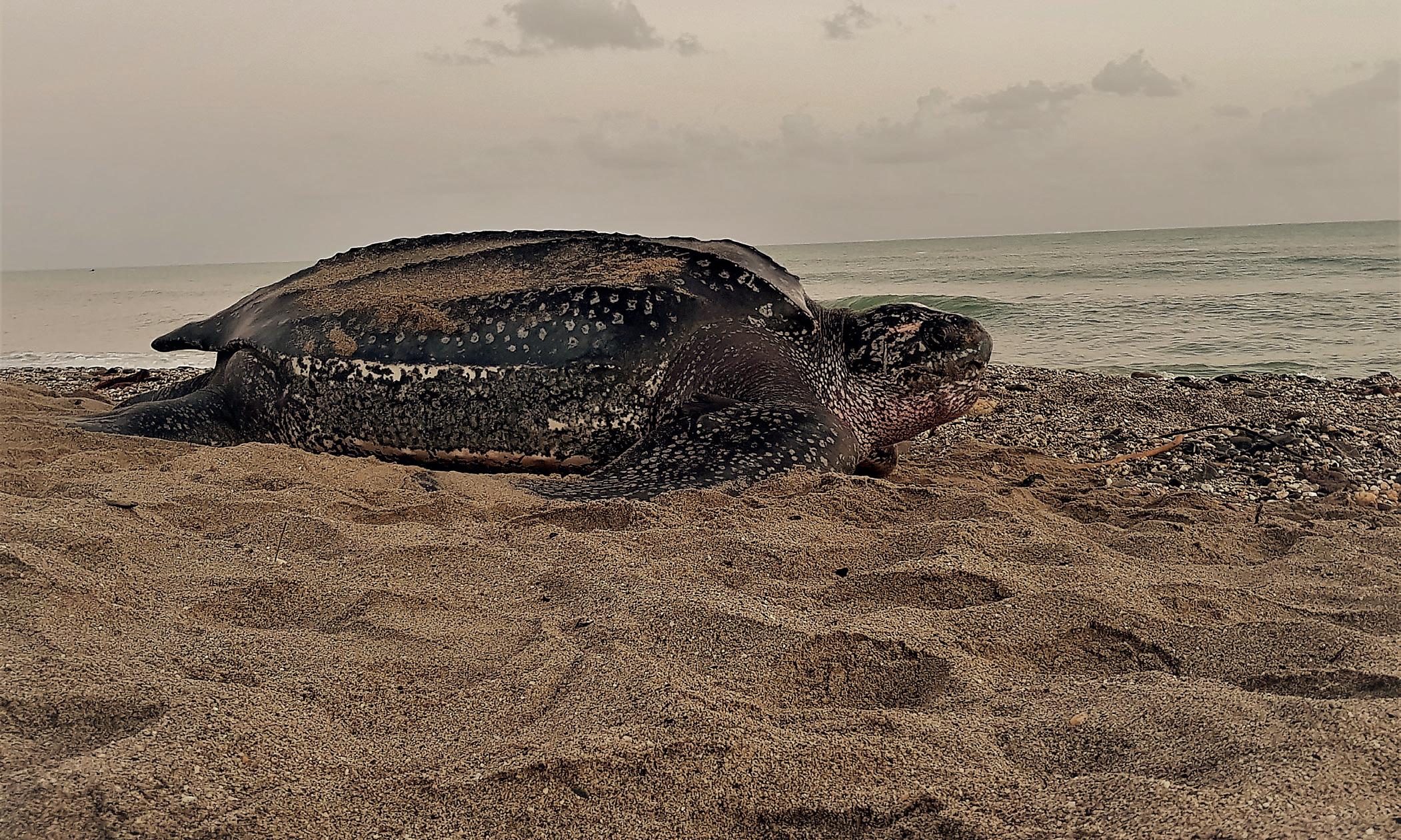
Going Green 2024 18
Leatherback Turtle nesting in Trinidad

that year, when normally we have less than 40 a year. All of them were emaciated skeletons swimming around. We were seeing them washed up on the shoreline dead, which was very unusual.” When a turtle washes up dead, Dr Roth performs a necropsy to determine the cause of death.
2015 and 2018 had been peak years for turtle numbers in Bermuda, so this collapse was sudden but coincided with a collapse in the seagrass beds all around Bermuda. “Seagrass and turtles have been in balance for over 150 million years. That balance is gone and that’s because of a number of factors,” she continues.
One reason is “grazing pressure”. Successful conservation measures on the nesting beaches have led to greater numbers of turtles, in which case, adds Dr Roth, “we need seagrass conservation and protection as well.” They would also like to see more protection from the turtle’s natural predator, sharks.
Other causes could be pollution, algae blooms preventing sunlight reaching the
Bermuda turtles GoingGreen
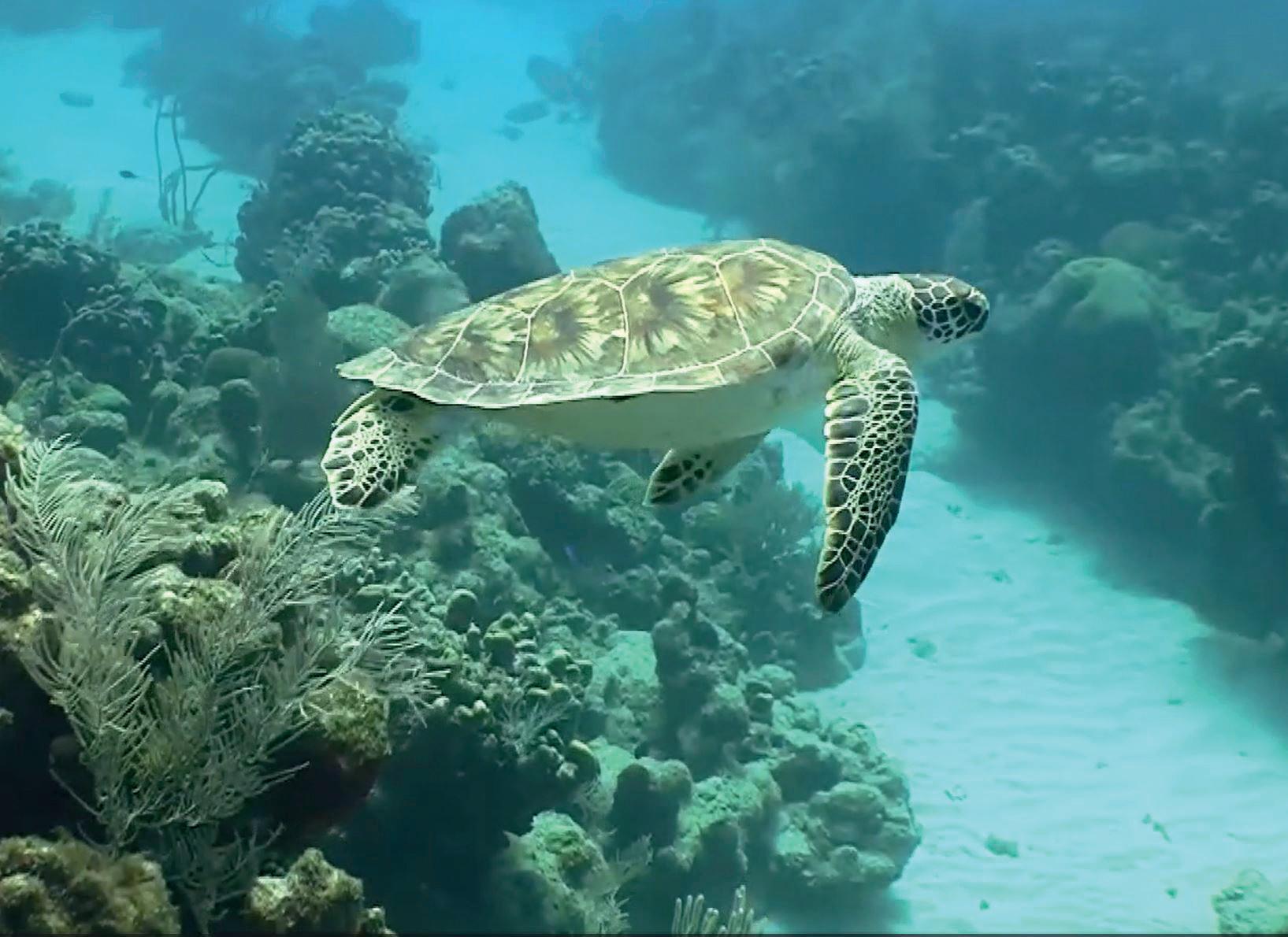

sea beds, and boat chain damage to the seagrass beds.
In 2023, however, things did start to look up. New seagrass beds were emerging and the turtles that had survived, adapted their diet, eating different seagrasses or even algae to survive.
As part of their conservation role, the Bermuda Turtle Project raises awareness of the threats to our sea turtles and this, like their lifecycle, extends beyond Bermuda. They therefore run international courses for students from Bermuda as well as abroad: “We’ve had
numerous students who’ve gone back home with a much better knowledge base to change legislation in their home countries,” says Gray.
“There’s lessons to be learned from sea turtles,” she continues. “They don’t have geographic boundaries. Their lifestyle is to move from one stage of life to another. They’re an example of an animal that lives beautifully in harmony with their surroundings.”
If you find a dead or injured sea turtle call the sea turtle hotline: 293-2727 Ext: #999
19 Going Green 2024
Green Turtle
Hawksbill Turtle
Dr Gaelle Roth
Bermuda’s Beyond Plastic Champions
The Bermuda community is rallying behind an environmental crusader, Beyond Plastic, with a visionary goal: to sculpt a future less dependent on single-use plastics. This initiative isn’t just about advocacy; it’s a movement aimed at fostering awareness, inspiring collective action, and driving a tangible shift towards sustainability across the island. From the bustling corridors of hotels and restaurants to the lively classrooms of schools, the Beyond Plastic Champions programme emerges as a beacon of change, celebrating and motivating businesses and educational institutions to innovate, adapt, and adopt practices that safeguard our planet for generations to come.
Hamilton Princess and Beach Club
From the moment guests enter the Hamilton Princess and Beach Club they are greeted not just by friendly, helpful staff and world-class artwork, but also reusable, sustainable products and systems.
There is no longer any single-use plastic in any of the ‘front of house’ areas. Plastic water bottles have been replaced by glass or aluminium ones. Reusable water bottles and hot drink tumblers are sold in the shops and Duchess Café. Takeout coffee cups are double-insulated to eliminate the plastic-lined coffee cup and cup sleeve. The stirrers are made from bamboo, and the straws are made from hay.
Where drinking cups, utensils or containers are needed, the hotel uses ones supplied by the Sustainable Agave Company, which have been upcycled and are compostable.
In the rooms, small single-use shampoo, conditioner, and hand lotion bottles have been replaced with larger, refillable bottles and, the in-room Nespresso machines use recyclable
aluminium pods.
While the hotel has successfully become a Beyond Plastic Champion, the process towards more sustainability continues.
New in the hotel and beach club this summer, will be filtered water stations guests can use to refill their water bottles, and mobile key access is planned soon, to replace plastic key cards.
For a hotel the size of the Hamilton Princess and Beach Club to move away from single-use plastic has required considerable work and investment. This has been driven from two sides. Firstly, by Fairmont, the global company that operates the hotel and who have ambitious targets to reach net zero by 2050, and secondly by the hotel’s owners, the Green family.
At the heart of implementing the Beyond Plastic Champion changes is D’Esta Ascento, Assistant Director of Engineering and hotel sustainability champion. Behind her, there is a whole team of people, from the hotel’s senior leadership, down.
“General Manager, Tim Morrison is a phenomenal support and Director of Operations, Roydell Neverson is a big component as well,” she says, adding “it has become a part of our culture. All our leadership, our food & beverage team, our stewarding team, my engineering team. It’s been a collaborative effort.”
Having this level of support has been vital because, she explains: “It’s a change. We are working on shifting the mindset into a more sustainable mindset across the board for our hotel guests and our team, so that when we do implementations, the buy in is greater and we’re not met by a lot of hesitation.” Education and communication have proved vital for this endeavour.
The feedback to the hotel’s sustainability initiatives has been very positive: “It means a great deal to both hotel staff and guests,” says Ascento.
In conjunction with eliminating singleuse plastic, Ascento and her team are also focusing on energy efficiency and waste management reduction. They have LED lighting, heat recovery systems, energy management systems, promote recycling and have their own reverse osmosis machine. They are also in the process of testing motion sensors and looking into water conservation measures.
They have even teamed up with ecoSPIRITS, a company that refills many of their spirits bottles, further reducing waste. This international company provides a low-waste spirits and wine distribution service, which aims to end single use glass. Furthermore, for every ecoTOTE container they sell, 1kg of ocean waste is collected.
Helping to make the Hamilton Princess and Beach Club more sustainable has been more than just a job for Ascento: “I care about the environment. My family make jokes when I go to the beach. It’s like: ‘oh goodness, where’s the picker?’ Because they know I’m going to pick up something,” she laughs.
Little Venice
For a restaurant to achieve Beyond Plastic champion status is no mean feat, especially when it comes to take out, which for many means plastic bags, plastic containers, and plastic cutlery. But, at Little Venice, these are no more.
Under the direction of Executive Chef, Danny Lim, there is no more single-use plastic at Little Venice. Plastic bags have been replaced with paper or reusable ones. The take-out cutlery is made from bamboo and the containers are aluminium. Plus, to reduce waste, customers must ask for cutlery and napkins, they are not automatically included.
Lim, however, went even further, buying reusable, Little Venice glass
Going Green 2024 20 GoingGreen beyond plastic
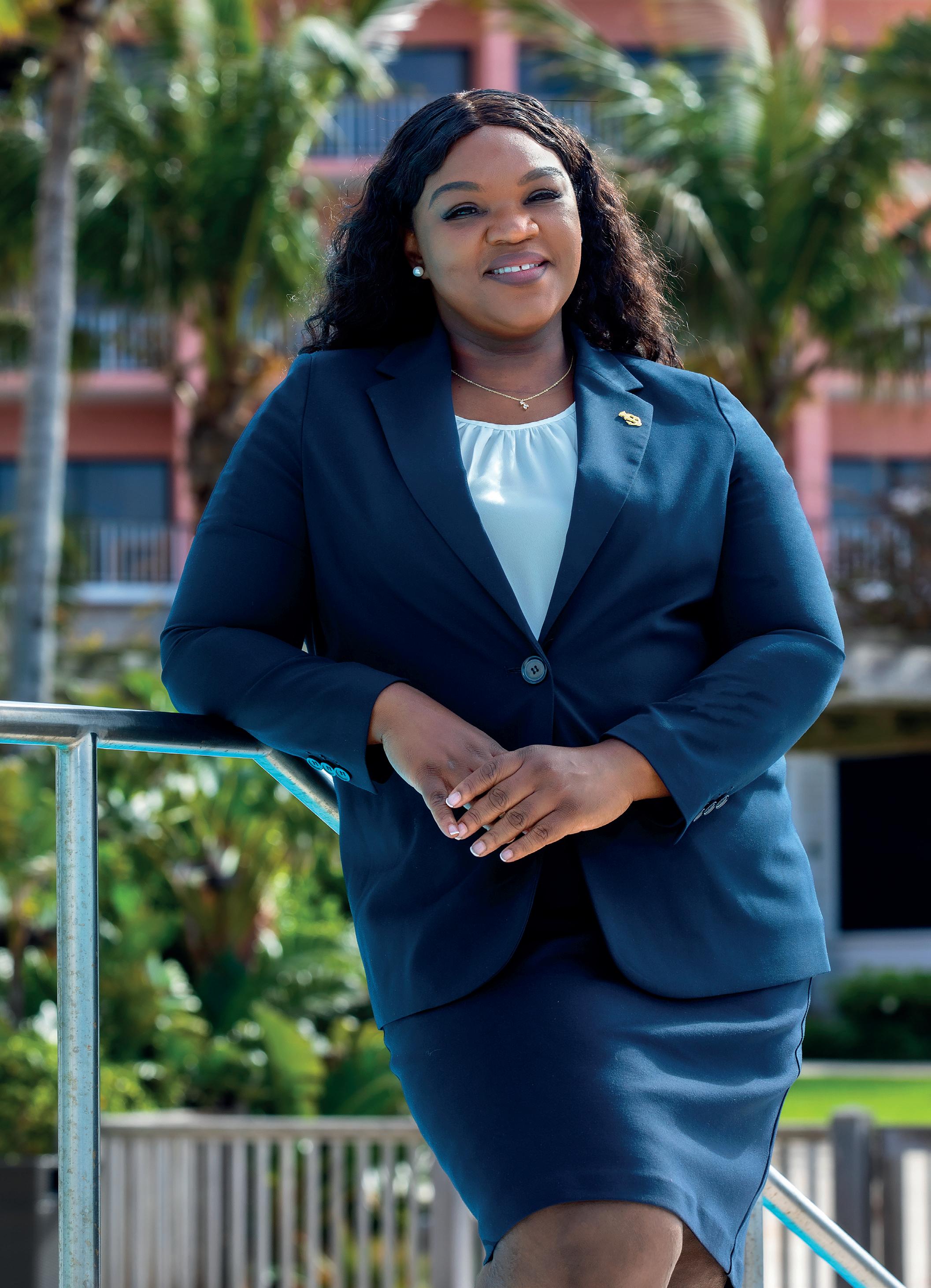
21 Going Green 2024 beyond plastic GoingGreen
D’Esta Ascento, Assistant Director of Engineering
GoingGreen beyond plastic
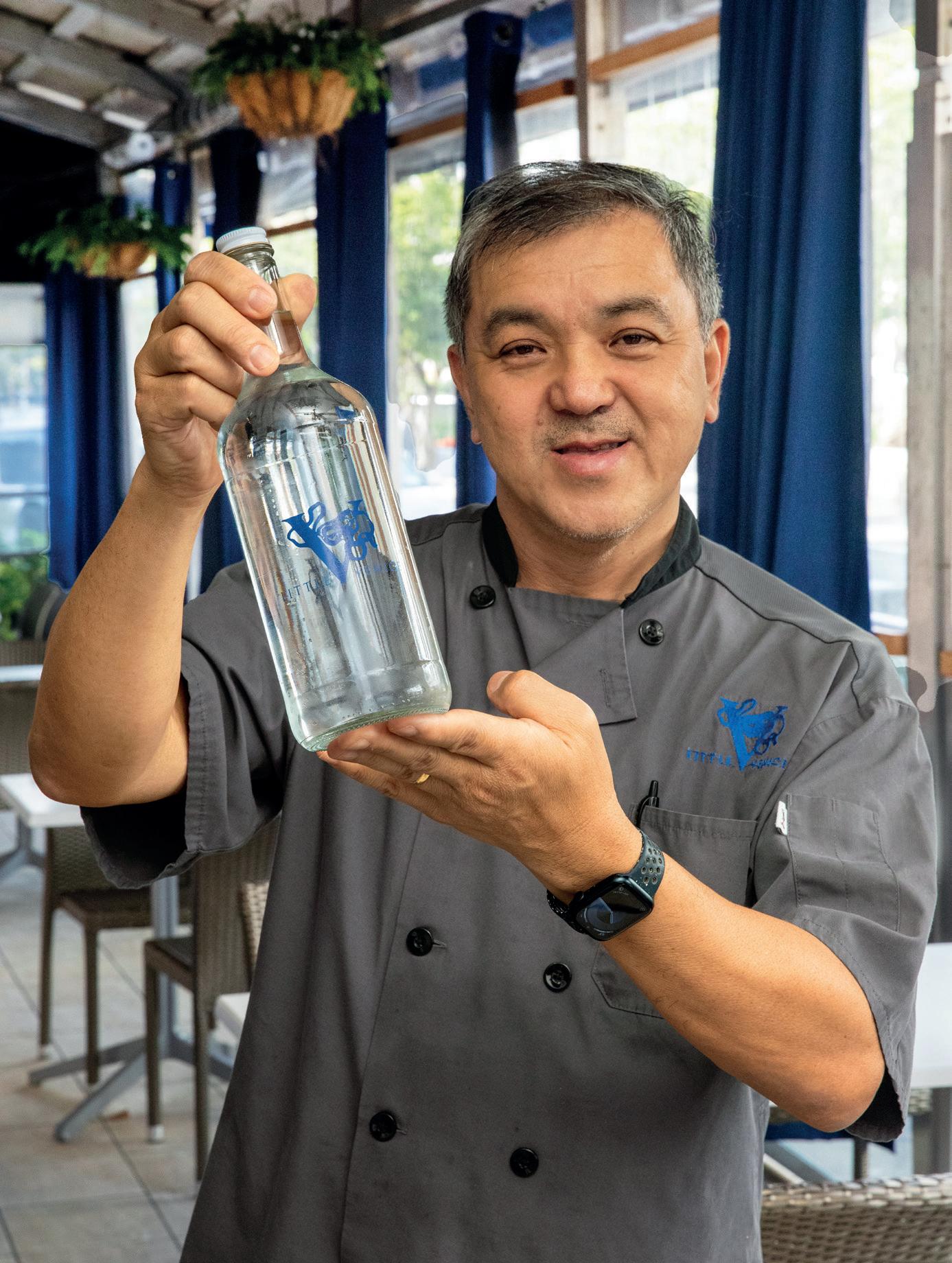
bottles and installing the restaurant’s own bottling system. They no longer buy any bottled water and while this was, he admits, a costly up-front expense, it has reduced their carbon footprint – all the bottled water had come from abroad –and the amount of waste they throw out.
Lim began this process during Covid, determined to do better for the environment. But being the first restaurant in Bermuda to do this meant there was no blueprint to follow: “It was very hard at the beginning,” he says. “It was hard to source things and you had to wait for them to come. Now it’s a lot easier because a lot more people are producing them. The costs are starting to go down a little bit. At the beginning it was very costly.”
With the full support of the Little
Venice group behind him, as well as help and guidance from the team at Beyond Plastic Bermuda, he saw it through. The biggest challenge of all was the bottling system.
Using machines bought through Clearwater Systems, the restaurant now has three types of filters to purify the water, including UV and carbon filters. They also have a chiller machine, as well as a CO2 component to create sparkling water.
Once used, the bottles need to be cleaned and sanitised, and for this, Lim needed to replace the existing dishwasher with a commercial one that could not only fit the glass bottles in correctly but could also reach the required germ-killing temperatures.
“It took me close to a year to plan all
this, plus, I’m the first one to do it so it’s a lot of work,” he remarks.
The work has been worth it, however. For a start, customers love the fact that Little Venice has done this and regularly compliment the bottles. Secondly, trash has been reduced significantly. Where they used to put out “two or three barrels of blue bags every night”, now it’s about half a bag. And thirdly, there is a lot more storage space in the kitchen, particularly the fridge:
“When you buy water, you buy 10 or 20 cases and you need space to store them,” he said. “Now, we just do the water as we need. You don’t need to put them in the fridge anymore because the machine is ice cold.”
Lim has inspired other restaurants in the Little Venice group, many of whom are following his lead and adopting as many of the new measures as possible. L’Oriental Express even sells their own Little Venice reusable coffee cups and customers get a discount when they buy their hot drink using these cups.
Lim’s advice to other restaurants is: “Just try your best and see what you can do. I know it’s costly. The restaurant business is hard.” Even if it’s just plastic spoons and Styrofoam containers, he adds, these are easier to change.
Bermuda High School (BHS)
What children learn at school doesn’t just impact them. It impacts everyone around them. The staff, their families and, therefore, their wider communities. For a long time, the Bermuda High School (BHS) has been teaching its pupils how to have a positive impact on the environment, but their determination to become the first school to achieve the Beyond Plastic Champion status, took these initiatives to a new level.
Under the leadership of Geography Teacher and Eco Leader, Greg Suter, the school has not only eliminated single use plastic wherever possible, but it also promotes recycling as well as re-usable bottles, food containers and cutlery among its pupils, staff, and parents.
Water filling stations around the school record how many water bottles have been saved, there are blue recycling bins in all the main hallways, single-use pods for hot drinks have gone, washable
Going Green 2024 22
Executive Chef, Danny Lim
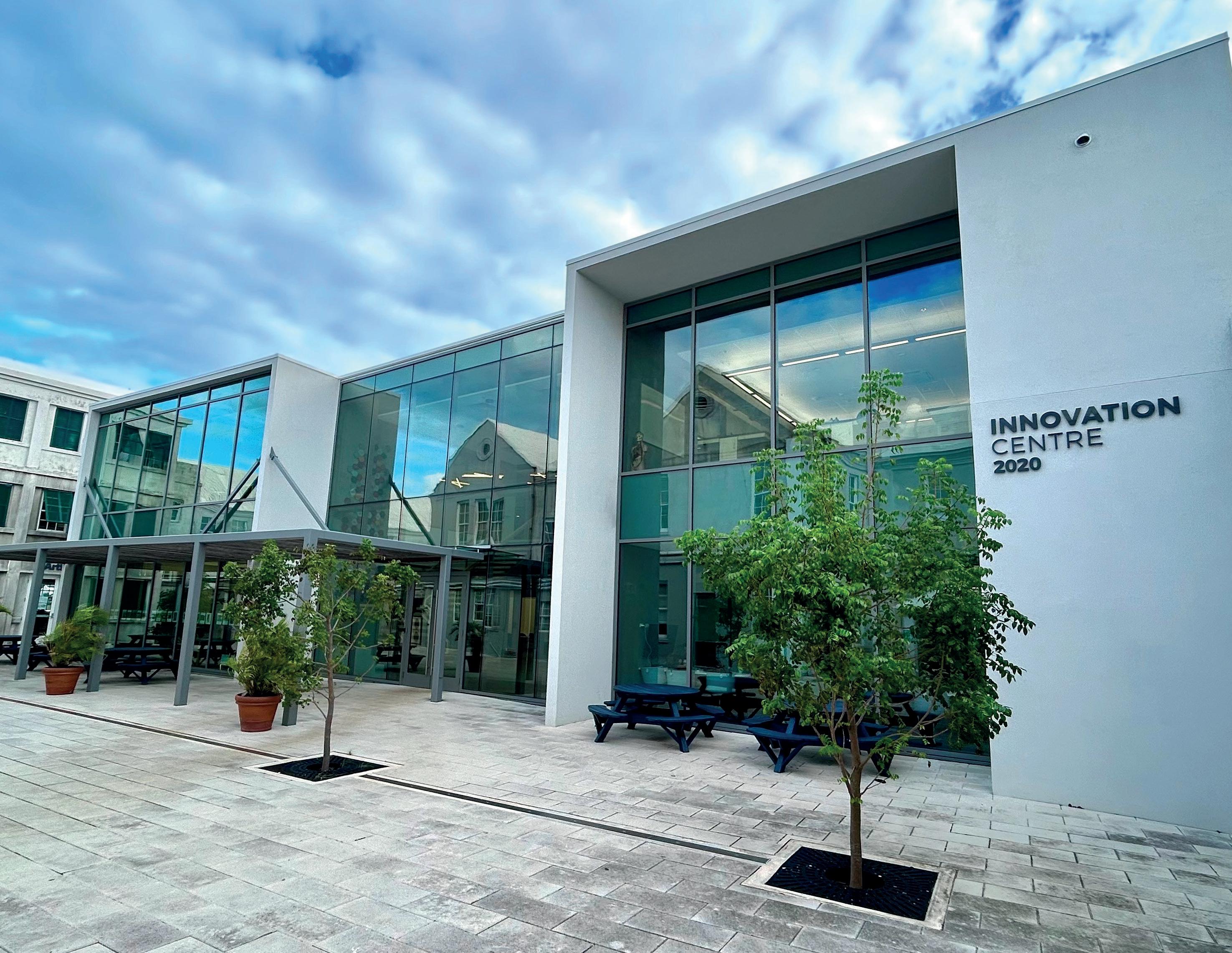
utensils, cups and plates are available for staff and student use, the fridge in the staff room no longer contains any plastic bottled drinks, catered lunches and class parties are plastic free, single-use plastic is discouraged at bake sales, and the list goes on.
“It’s been really supported and embraced by the students and staff,” says Suter. “[Everyone has] been very understanding in terms of being very aware that they’re having a positive impact on the environment.”
Being a school, education has also played an important part in promoting their Beyond Plastic Champion status as well as their environmentally friendly ethos overall.
For the last two years, STEAM (Science, Technology, Engineering, Art, and Maths) week, which takes place during the summer term, has had groups focusing on different aspects of plastic pollution, including microplastics, water plastics removal, beach clean-ups and upcycling.
Keep Bermuda Beautiful (KBB) gives an assembly on the subject, and the ‘Eco Runway’, which is designed and run by senior year students, showcases outfits which have been repurposed from plastic waste.
Becoming a Beyond Plastic Champion is part of an ongoing process at BHS, which started some years ago, when the school started to participate in BUEI’s Eco-Schools initiative. This is a sevenstep framework with several different goals schools need to achieve such as the ‘Climate Change Pathway’ and ‘Waste and Litter Minimisation’:
“Beyond Plastic tied into this nicely, making the initiative even bigger and more spread into the community, which is the ultimate aim,” continues Suter.
New this year, is the Green Cup initiative, driven by the new head of school, Carol Swainson. “The Green Cup has a focus on reducing the ecological footprint at schools, with the focus on electricity this year,” he explains. “The
idea is that every year, there is a new element added to the Green Cup, which follows the BUEI Eco-Schools pathways.” The Green Cup is a collaborative effort between BELCO and BUEI, and several local schools are taking part.
The school also hopes to introduce reusable tote bags for senior students getting their lunch off-campus. The plan is for these to be collected before they leave the school premises and then returned, meaning they don’t have to rely on single use plastic bags.
“To be a Beyond Plastics Champion gives BHS the validation that it is making a positive impact on the environment. It also provides additional educational initiatives, both on and off campus through the changes that have been implemented and those yet to happen,” says Suter. “The hope is to inspire the BHS community, and beyond, to work in conjunction with Beyond Plastic and EcoSchools initiatives to create a cleaner and greener Bermuda.”
23 Going Green 2024 beyond plastic GoingGreen
The Innovation Centre at BHS
GoingGreen climate change
Better Roads for a Cooler Bermuda
OBMI, a prominent architectural firm, presents an innovative approach to road repair and repaving in Bermuda: a sustainable and cost-effective alternative to asphalt
For the past 12 months, each monthly global temperature recorded has been the highest average temperature since records have been kept. The international goal to restrict global warming to less than 1.5 degrees Celsius (3 degrees Fahrenheit) above pre-Industrial average global temperatures appears to be more and more difficult to achieve, due to increased human carbon emitting activities. Despite the imminent threats of wildfires, droughts, hurricanes, and inland flooding, the nations of the world are slow to reduce their negative impact behaviors on the environment. The financial costs of such inaction are counted in the billions of dollars of insured and uninsured losses. The physical costs are deep trauma, homelessness, starvation, and even premature death. This does not have to

be so, we can and must change, quickly, how we develop and manage the earths resources.
condition of many of Bermudas roads. The Government has suggested the cost to repave the entire road network would be roughly $100 million dollars, or $1,352.81 per linear foot (56.36 per square foot).

In Bermuda our relatively benign summer coastal heat temperatures are aided by the cooler ocean temperatures in the mid 80 degrees Fahrenheit range. But inland the surface temperatures can be up to the 120-degree Fahrenheit level. The 140 miles of Bermuda roads are largely surfaced with asphalt, a black bitumen colored petroleum product. We all understand that our white roofs reflect solar heat, but do not seem to correlate that the miles of roadways are absorbing and radiating debilitating heat.
OBMI

ARCHITECTURE
ARCHITECTURE
INTERIOR DESIGN
INTERIOR DESIGN
LANDSCAPE DESIGN
LANDSCAPE ARCHITECTURE

DESIGN/DRAFTING
DESIGN/DRAFTING
APPROVALS/PERMITS
APPROVALS/PERMITS
COST ESTIMATES
COST ESTIMATES
GENERAL CONSULTING
GENERAL CONSULTING
FURNITURE & FINISHES
FURNITURE & FINISHES
LEED CONSULTING
The additional heat radiated creates negative health impacts for at risk infants and seniors, raising blood pressures to keep bodies cooled while stressing the heart. In an urban context the effect of excessive radiant heat creates so call “heat islands”, or areas that reach high temperatures during the day and do not cool down over night due to the latent heat buildup over the previous day. These heat islands are particularly noticeable in areas with lots of hard road surfaces and little or no shade trees. The negative social behaviors found in these areas reflect the environmental stress placed upon these communities.
Asphalt also requires resurfacing from time to time or the road surface dries out, cracks, and creates potholes after continuous rain down pours. Non-absorbent asphalt roads also require extensive drainage systems to carry sheet water away from the roads. Failure of such systems and strategies often create flooding. Such is the current
A cost effective, aesthetic and environmentally sensible solution would be to get rid of asphalt all together and start to replace our roads with modern water permeable bricks. These bricks are made with concrete and or postindustrial porcelain waste materials. The bricks are laid on a sand bed that allows for the free flow of water through them. As our roads are no longer static infrastructure but active with buried utilities and communication systems below, requiring access and repairs from time to time, the bricks maybe removed for the repair works then reinstalled without having to buy additional material. Currently the cost of installation of good quality paver driveway is less than $25.00 per square foot or half of what the asphalt costs would be. Modern mass brick laying machinery used in the Netherlands would further reduce the labor cost and provide a uniform appearance and precise infrastructure. As important as saving costs and reducing flooding, these bricks can be manufactured with light reflecting colours like beige and greys, thus greatly reducing inland heat islands. Pre 1947, before roads in Bermuda were paved with asphalt, roads were surfaced with sand and gravels, reflecting the sun’s rays, and providing a delightful ambience that promoted the islands tourism appeal to the industrialised northern visitors.
By applying an aesthetic that our forbearers knew and understood, with the application of modern costeffective installation technologies and new materials, while greatly reducing our dependence on oil based products, we can do our collective part to reduce global warming. To discuss these ideas telephone OBMI on 278-3550 or Email: admin@obmibermuda.com
Going Green 2024 24
T + 441.278.3550 E + MSMITH@OBMI.COM
T + 441 278 3550
COM
ADMIN@OBMIBERMUDA
An example of Hydropavers post heavy rain event in Bermuda
Eco-Smart Offices: Simple Steps to Sustainable Workspaces
In the heart of every small office lies the potential to make a significant environmental impact. Businesses and offices in Bermuda have the advantage of agility – the ability to implement green changes rapidly and efficiently. Here are some practical tips and tricks that your office can adopt to promote sustainability and contribute to a healthier planet.
Reduce Paper Use:
The paperless office is no longer a pipe dream but a feasible reality. Encouraging digital documentation, utilising cloud storage, and reducing unnecessary printing can drastically cut down on paper waste. If printing is a must, use recycled paper and print double-sided.
Energy Efficiency:
Offices can make energy-saving adjustments that yield long-term savings and environmental benefits. Switch to LED light bulbs, which use at least 75% less energy and last 25 times longer than incandescent lighting. Encourage employees to turn off lights, computers, and other electronics when not in use. Smart power strips can help cut power to devices in standby mode, which otherwise continue to draw energy.
Sustainable Supplies:
Opt for office supplies made from recycled materials or from companies that have sustainability certifications. Items like pens, notebooks, and even furniture can be eco-friendly. A move as simple as replacing disposable plastic pens with refillable ones can reduce plastic waste.
Indoor Air Quality:
Improving indoor air quality can boost health and productivity. Introduce office plants that not only purify the air but also add a touch of greenery. Ensure regular maintenance of HVAC systems to improve air quality and energy efficiency.
Recycling and Composting:
Set up recycling bins in convenient locations. Educate employees on what can
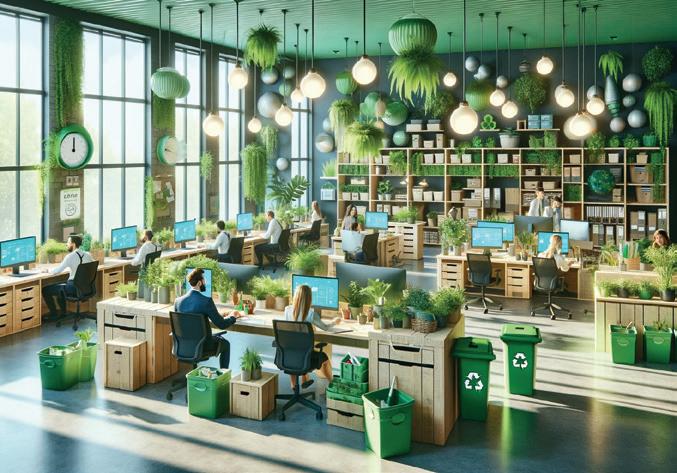
and cannot be recycled. If your office has a pantry or kitchen, consider starting a composting program for organic waste.
Eco-friendly Cleaning:
Use green cleaning products that are biodegradable and free from harsh chemicals. This small change protects the environment and the health of your employees.
Mindful Catering:
For office events or meetings, choose catering services that use local, organic produce, and minimise single-use plastics. Using real dishes and silverware instead of disposables can also make a significant difference.
Sustainability Officer:
Designate a sustainability officer, even if it’s a part-time role or a shared responsibility. Having a dedicated person or team to lead and measure the office’s green initiatives can help maintain focus and generate new ideas.
Businesses have the unique capacity to create intimate and dedicated green cultures. By implementing the above measures, not only can offices lessen their environmental footprint, but they can also inspire employees to carry sustainable practices into their own homes and communities. Going green isn’t just about the big gestures; it’s in the small, everyday actions that everyone can participate in. These collective efforts can lead to a substantial environmental impact, paving the way for a greener future.
25 Going Green 2024 business sustainability GoingGreen
WE ARE FIRMLY AND ACTIVELY COMMITTED TO PUTTING OUR GREEN FOOT FORWARD! Tel: 292-5500 16 Mill Creek Road, Pembroke www.tops.bm TOPS LTD. BELIEVES IN A GREEN ENVIRONMENT FOR ALL. WE ARE FIRMLY AND ACTIVELY COMMITTED TO PUTTING OUR GREEN FOOT FORWARD! 16 Mill Creek Road, Pembroke www.tops.bm TOPS LTD. BELIEVES IN A GREEN ENVIRONMENT FOR ALL. Total Office Products and Supplies
Electrifying the Road with the affordable Neta V
Going Green takes an eco test drive of latest EV to hit the island’s roads
One of the most suprising aspects of World Distributors’ Neta V electric car is its driving experience; it maneuvers just like any other sporty SUV. It’s also equipped with all the features you’d expect to find in any other car in its class, along with a few exclusive to an EV.
Neta, a Chinese EV brand, is classified as an E-class car, and is priced at $34,500, a comfortable notch below its EV competitors in the current market.
It’s available in various colors, and comes standard with laser-fit floor mats, rain visors, and a plastic trunk liner for the spacious trunk — ideal for sandy beach outings.


Going Green 2024 26 GoingGreen electric cars
Tel: 296-4567 ◆ wd2sales@worlddistributors.bm ◆ www.wdauto.bm N et a V - Revolutionize t he way you t hink about electric vehicles.
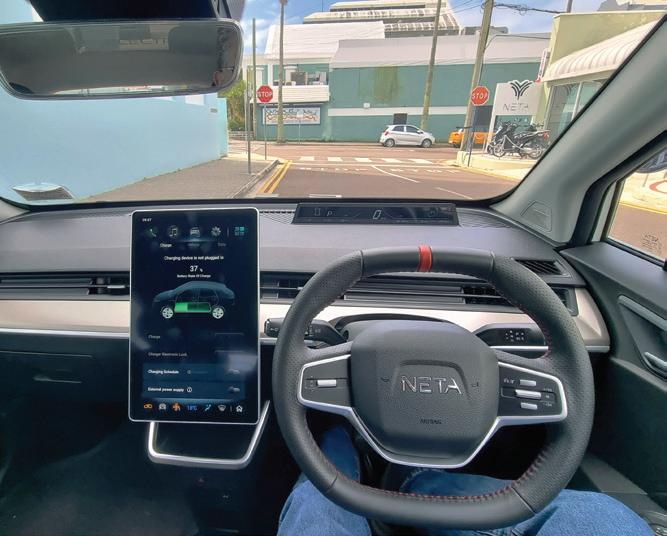
The body is protected with rust-guarding by Ziebart, which includes a three-year warranty. Maintenance and repairs are in the capable hands of the Current Vehicles team of expertly trained EV technicians.
EV ownership is often lauded for its reduced maintenance costs due to fewer mechanical parts when compared to internal combustion engine (ICE) vehicles. Typically, the Neta needs just an annual service to check on tires and brake pads. Plus, there’s reduced running costs, which World Distributors estimates at around $6-7 per charge — far less than the costs of filling your tank with gas.
The car’s approximate 250 mile range means, as per World Distributors, charging is only needed every 7-10 days, depending on usage. Recharging the battery from 20% to 90% takes 4-5 hours using a type-2 charger that can be conveniently installed at one’s residence.
On the road, the Neta V impresses with its modern, high-tech demeanor. Entry and ignition are seamless with a keyless push-button start. The interior sports a “high-tech minimalist” look. The digital heads-up display eschews traditional odometer dials in favor of essential EV stats like battery life, speed, and temperature. The steering wheel’s small, rounded square shape adds to the vehicle’s race-inspired character.
A 15” vertical touchscreen centralises control, allowing for various customisations.
To drive, simply shift the dial on the steering column to ‘D’ and proceed. The acceleration is smooth. It’s an enjoyable ride, reminding you of its electric nature yet feeling like a well-rounded, fashionable vehicle that meets 2024’s expectations.
The Neta V is on display at World Distributors’ Dundonald Street showroom, where you are welcome to arrange a test drive and experience the car firsthand.
Eco-Friendly Cooling

Gree’s Generation 4 residential air conditioning units are pioneering in the realm of eco-friendly cooling technologies. These units are meticulously designed to offer unparalleled comfort while significantly minimising environmental impact, making them an exemplary choice for homeowners committed to reducing their carbon footprint alongside their energy expenditures.
Incorporating eco-friendly refrigerants with a markedly lower global warming potential (GWP) than their traditional counterparts, the Generation 4 models stand at the forefront of efforts to mitigate the use of high-GWP refrigerants. This conscientious shift not only diminishes the units’ environmental footprint but also aligns with global environmental conservation initiatives, highlighting Gree’s dedication to sustainability.
Smart connectivity emerges as a cornerstone feature of these models, empowering users with the ability to effortlessly control their air conditioning units via Gree’s intuitive mobile app. This innovation enhances user comfort and efficiency, enabling seamless adjustment of settings to match individual preferences without unnecessary energy waste.
Moreover, these models are distinguished by their sleek, contemporary design that effortlessly complements any home decor. Coupled with advanced filtration systems, they excel in purifying indoor air, eradicating pollutants and
allergens, thereby fostering a healthier living environment. By marrying efficiency with environmental stewardship, Gree’s Generation 4 air conditioners redefine industry standards for home cooling solutions. Tel: 542-1033.
Email: hvacshack@coldsnapservices.com
Buy Gree, Plant a Tree
542-1033

Going Green 2024 27
energy GoingGreen
hvacshack@coldsnapservices.com HVAC Shack is a proud sponser of the BZS Microforest project. End users of Gree air conditioners can have a lasting positive impact on our environment, community and planet.
Sunny Side Solar Pioneers Charitable Energy Revolution
Claire Smith and Nick Hutchings, the visionary founders of Sunny Side Solar, embarked on a mission to combat climate change by harnessing the power of the sun. Their commitment to sustainability and community welfare led them to establish Sunny Side Solar as a not-for-profit company. This unique structure ensures that not only do 100% of profits benefit charitable initiatives, but also their primary mission is to make solar systems affordable to everyone. Their pricing is unmatched.
One of Sunny Side Solar’s groundbreaking initiatives is its Matching Grants for Charity Solar programme. This innovative approach allows individuals to support their favorite charities by donating solar systems, with Sunny Side Solar matching donations up to half the system’s value. Through this programme, charities such as the Women’s Transformational Living Center and Meals on Wheels will continue to benefit from solar energy, becoming more sustainable while reducing operating costs.

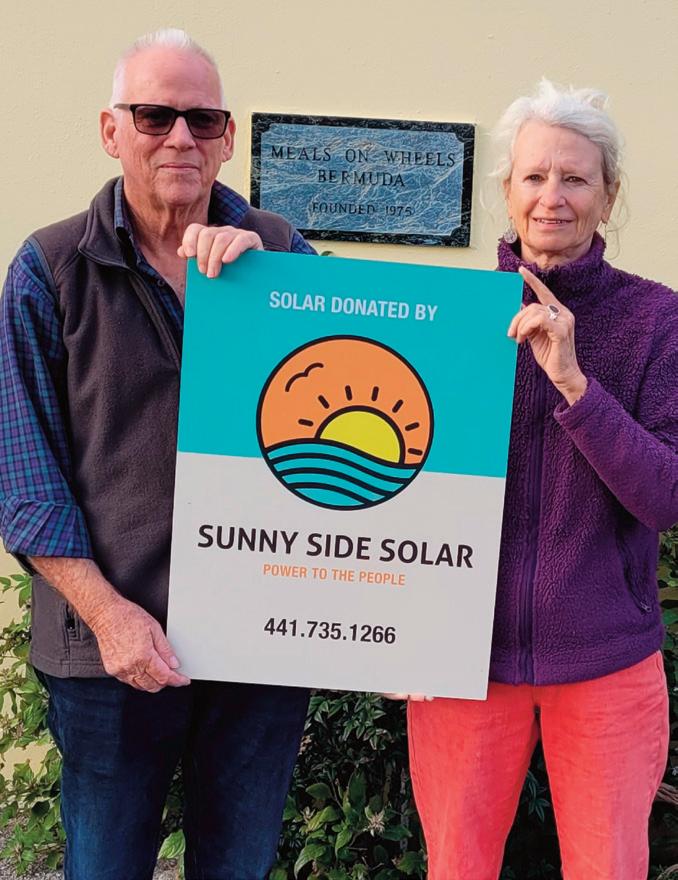
Moreover, Sunny Side Solar’s commitment to affordability and quality has garnered trust from industry professionals and homeowners. Now in their fourth year of operation, they can boast installing
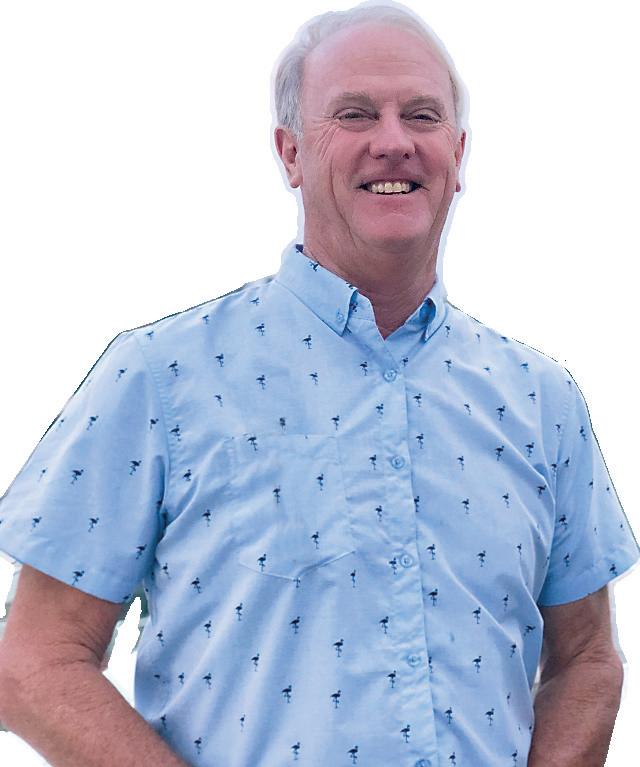

solar on more than 65 houses and 5 charities. Their low prices belie the exceptional value and performance of their solar solutions. Butterfield Bank, in partnership with Sunny Side Solar, is now offering green loans, so investing in solar not only benefits the environment but also offers immediate financial savings, with Sunny Side Solar arrays often generating more savings than loan repayments from day one.
Beyond financial benefits, Sunny Side Solar’s initiatives contribute to a more resilient Bermuda. As the region faces increasingly intense and frequent hurricanes due to rising sea surface temperatures, the need to diversify the energy supply becomes urgent. Distributed solar emerges as a crucial solution, mitigating the risk of infrastructure damage and ensuring energy resilience in the face of natural disasters.
Since 100% of its profits go towards co-funding charitable installations, in addition to environmental and economic advantages, choosing Sunny Side Solar means supporting a company deeply rooted in social responsibility www.sunnysidesolar.org
Going Green 2024 28
solar energy
GoingGreen
SUNNY SIDE SOLAR POWER TO THE PEOPLE www.sunnysidesolar.org
The best car window tinting
Enhance your style, protect, and cool your car’s interior
As one of the investments you’ve carefully considered, your vehicle represents your distinguished taste and personal style. Confidently entrust its care to the window film solution that will exceed your standards for both top-quality construction and performance.
XenithIR™ Ceramic Film Series from Solar Gard offers discerning drivers the highest level of driving comfort and solar protection. Through a proprietary technology that leverages the most advanced ceramic materials available today, this new line introduces Solar Gard’s coolest interior temperature yet, clear transmission of cellular and other data signals, and a true black hue that enhances the look of every vehicle exterior. XenithIR blocks more than 99% of harmful UV rays to shield passengers from skin damage and high-end interior furnishings from premature fading.
FAST FACTS:
• Next-generation ceramic technology rejects up to 93% of infrared rays
• Total Solar Energy Rejection (TSER) of up to 63%
• Blocks more than 99% of harmful UV rays to protect passengers and vehicle interiors
• Signal-friendly construction won’t interfere with mobile phones, GPS navigation, satellite radio, and other electronic devices
• Helps keep shattered glass together for increased safety
• Rich black color that complements all exteriors
• Available in a wide range of shades to accommodate any driver’s preference and minimize glare
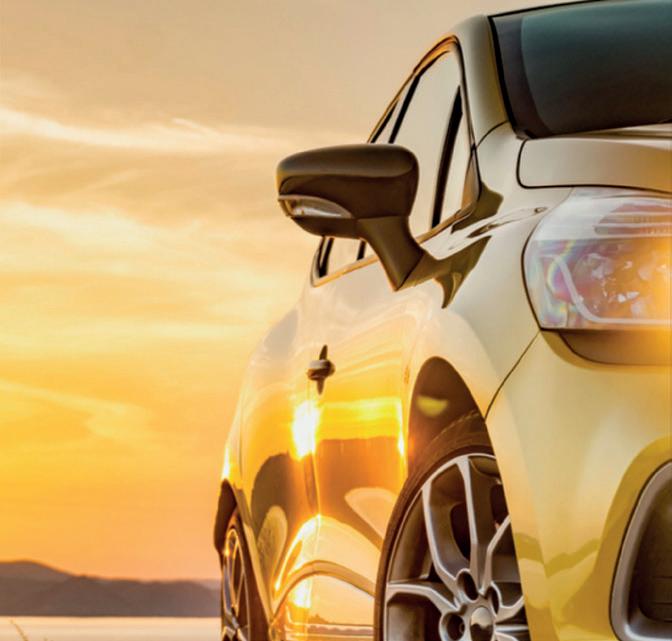


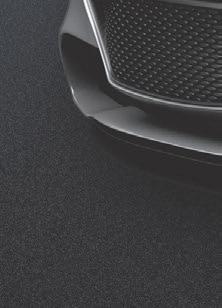

Ceramic is among the finest raw materials created by man or nature, and when applied to window film with the attention to detail that is synonymous with Saint-Gobain’s more than 350 years of experience – you can be assured of invisible-yet-powerful advantages. For a luxurious appearance that complements your lifestyle, and a driving experience unlike any other, look to XenithIR Ceramic to ascend your vehicle to new heights of comfort.


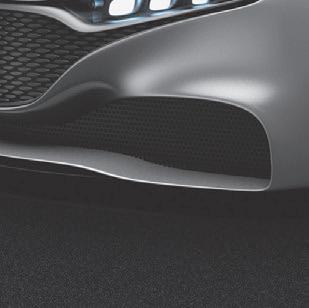



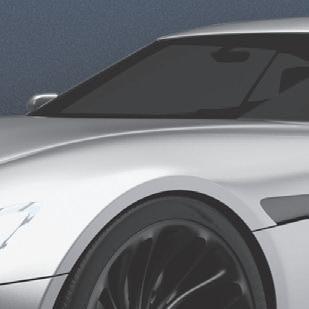


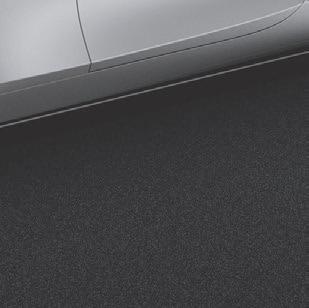

●
●

● Safer driving
● Shatter protection
● Enhanced privacy
● Protecting your investment
● Customize your look




Note: All window films must be applied in accordance with local tint laws. Call today to set up a FREE consultation. Telephone:



●



Going Green 2024 29 environmental impact
GoingGreen
rejects up to 93% of infrared rays of up to 63% UV rays to protect passengers and interfere with mobile phones, GPS navigation, satellite radio, and for increased safety all exteriors preference and minimize glare W
to tint your
including protection from harmful rays, safety and privacy. Window film can even help protect the investment in your car.
Gard window
to protect themselves and their
There are many reasons
vehicle,
Listed below are the top 7 reasons that most people choose Solar
film
car.
Driving comfort and energy savings
Protection from ultraviolet radiation
292-7448
Email: info@tintmasters.bm Visit us at: 13 Cox’s Hill Road, Pembroke Behind Auto Solutions

Reduce your Pet’s Pawprint
Noah’s Ark Feed and Supply looks at the environmental impact of cats and dogs
Including pets in our lives has many well-documented benefits related to both mental and physical health. However, as we expand our furry families, we may be increasing our carbon footprint in ways that we might not have considered.
Cats are obligate carnivores and dogs thrive on a meat-based diet. As meat production is costly for the environment, due to the heavy land, water, and energy use, it is one of the most significant parts of our pets’ carbon footprint. The resource use and
greenhouse gas emissions are not equal across all types of meat production. In fact, quality insect protein is now being incorporated into foods for both people and animals because of its dramatically reduced impact on resources and greenhouse gas emissions. It is estimated that the ratio of greenhouse gas emissions for production of beef:chicken:insect is 25:10:1. You do not need to compromise the quality of your pet’s diet but there are some slight changes you can make.
What you can do:
• If you are feeding a primarily beef diet, try adding in chicken or other poultry rotationally.
• Try out some insect-based treats.
• Keep sustainability in mind when choosing a food. Look for those certified to be sustainably harvested, fished, or farmed and organically grown.
• Adopt the nose-to-tail eating philosophy for food and treats. Bull sticks, fish skins, lamb horns are examples of healthy treats/chews that otherwise might enter the food waste
Going Green 2024 30 GoingGreen pets
stream. Consider foods that include more than just muscle meat. (https:// nosetotail.org/why-eat-nose-to-tail)
• Look for treats that upcycle foods like imperfect produce that would not make it to the grocer’s shelf or are a surplus of food production such as fruit pulp after juice extraction. Research shows that up to 8% of the greenhouse gases produced annually can be attributed to food waste.
• Use the 9-Point Body Condition Score as a starting point to see if your pet is an ideal weight. Review your pet’s diet and consult your vet. If your vet says overfeeding is the cause of excess weight, then reducing the amount you feed is a win for your pet and the environment. (https://www. aaha.org/globalassets/02-guidelines/ weight-management/weightmgmt_ bodyconditionscoring.pdf )
• Incorporate meat free days into your own meal planning.
Other things you can do:
• Clay cat litter (strip mined, nonrenewable, heavy to transport, hard to dispose of) is one of the most significant parts of your kitty’s environmental paw print. Try alternate cat litter made from recycled paper, corn cobs or kernels, cassava, natural woods like Pine.
• Use compostable dog waste pick up bags.
• Install a pet waste composter in your yard.
• Buy sustainable, durable, natural, and organic pet products when you can.
• Reduce plastic dependence. e.g., pet bar shampoo/reusable shampoo bottle; metal or ceramic pet dishes.
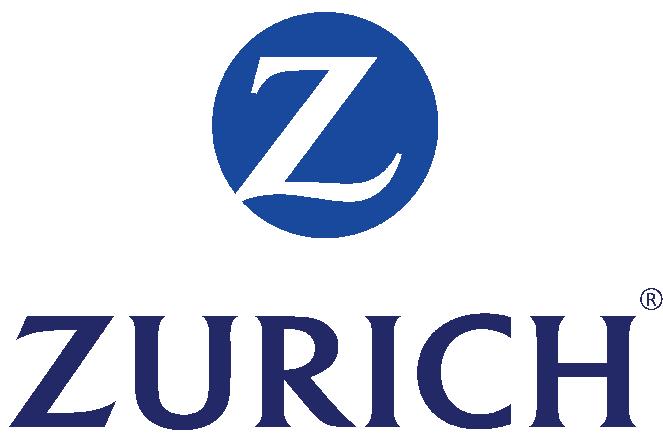
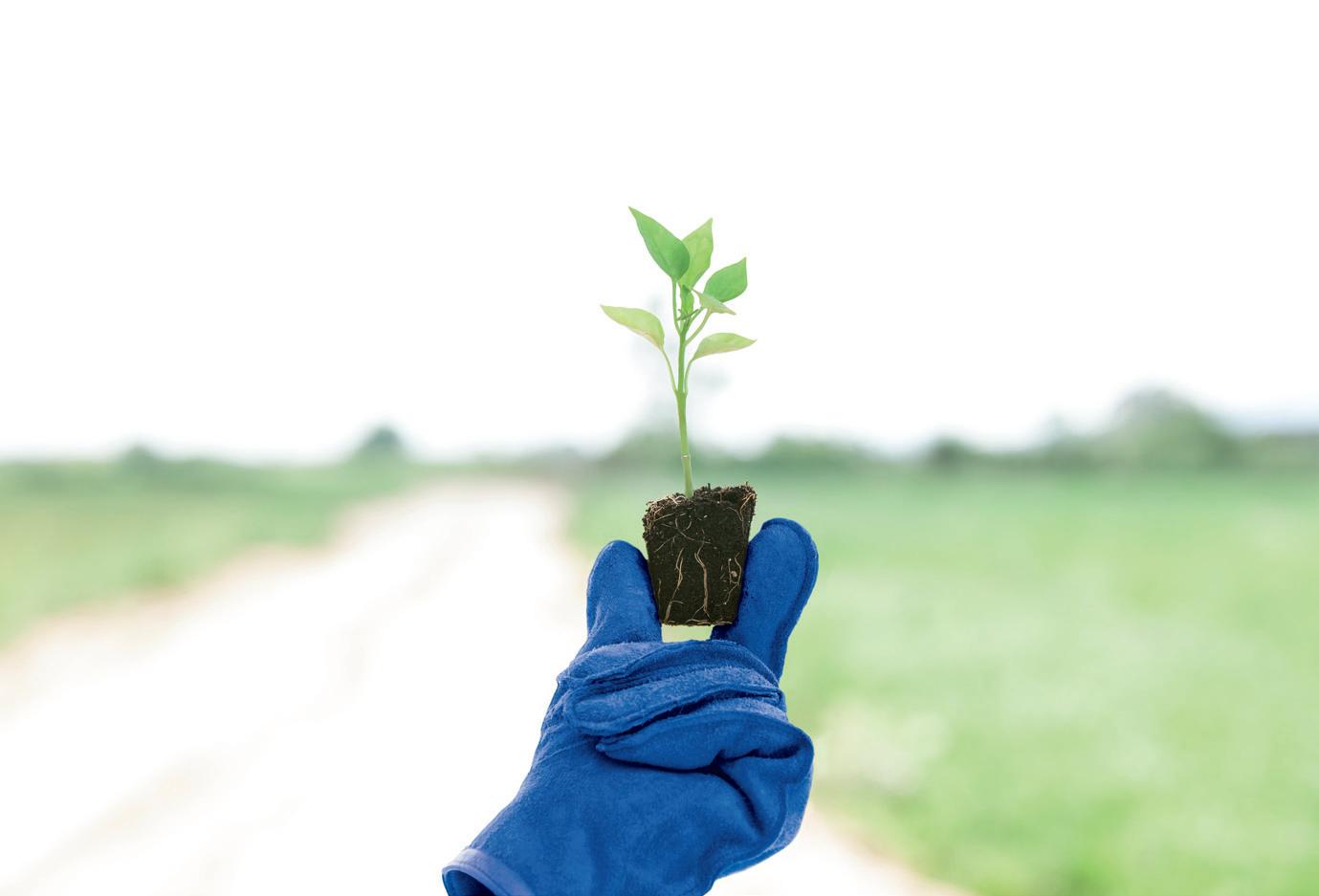
Sustainability for our future.
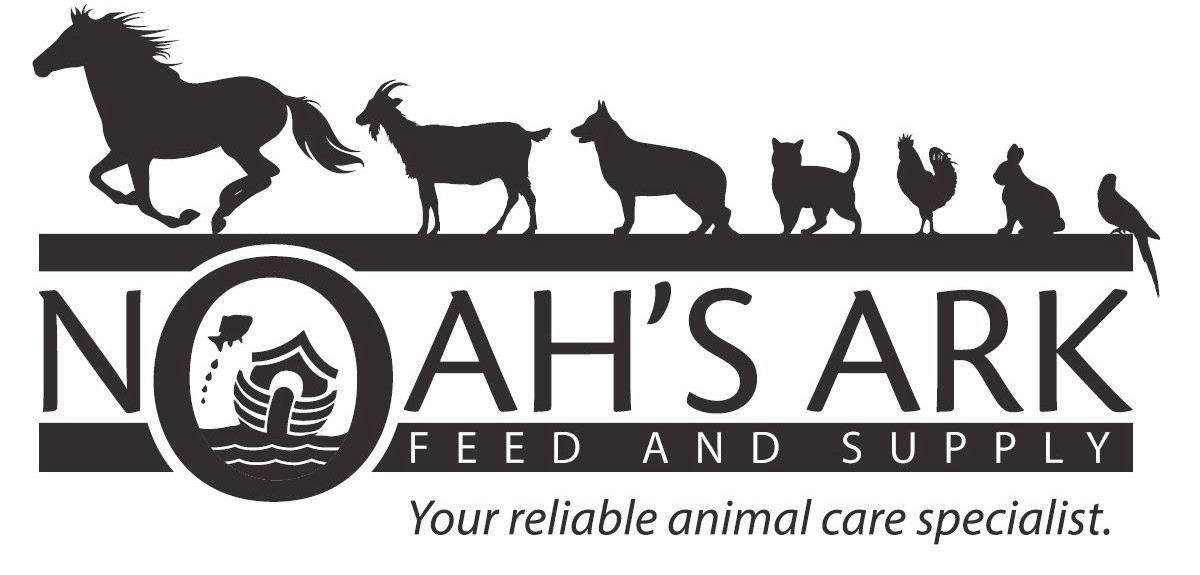
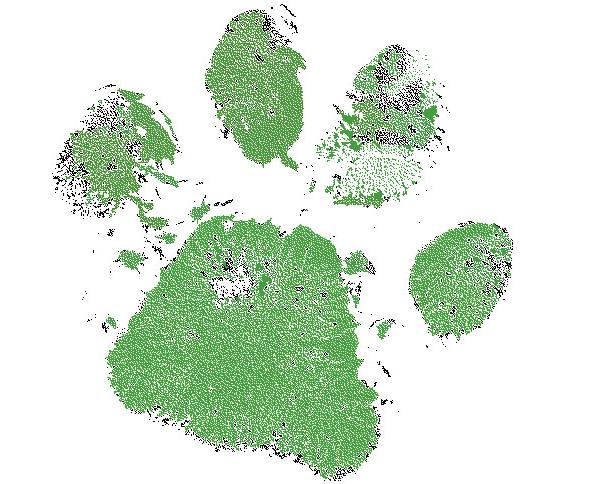


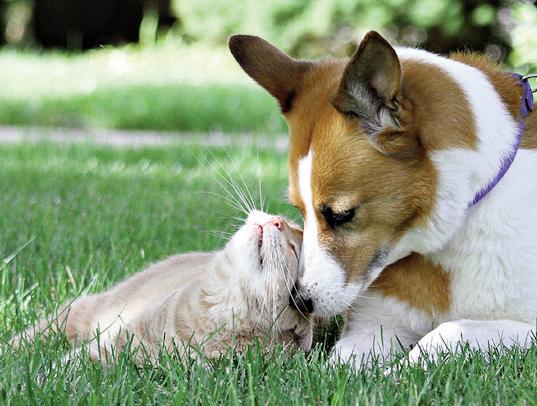
• Never release unwanted pets into the environment. This is inhumane and can be damaging to the environment. We have a local problem with unwanted turtles (Red-eared sliders), rabbits, guinea pigs and fish being released into the environment. Reach out to animal organisations and your pet store for help in re-homing. Changing our individual consumption choices may seem like a small thing when compared to corporate or government action but it is still important, especially on our island home.
Bermuda's premier animal care specialists for over 30 years and counting!
Offering earth friendly, organic and sustainable pet food, treats and supplies.
Online shopping and delivery available!




Going Green 2024 31
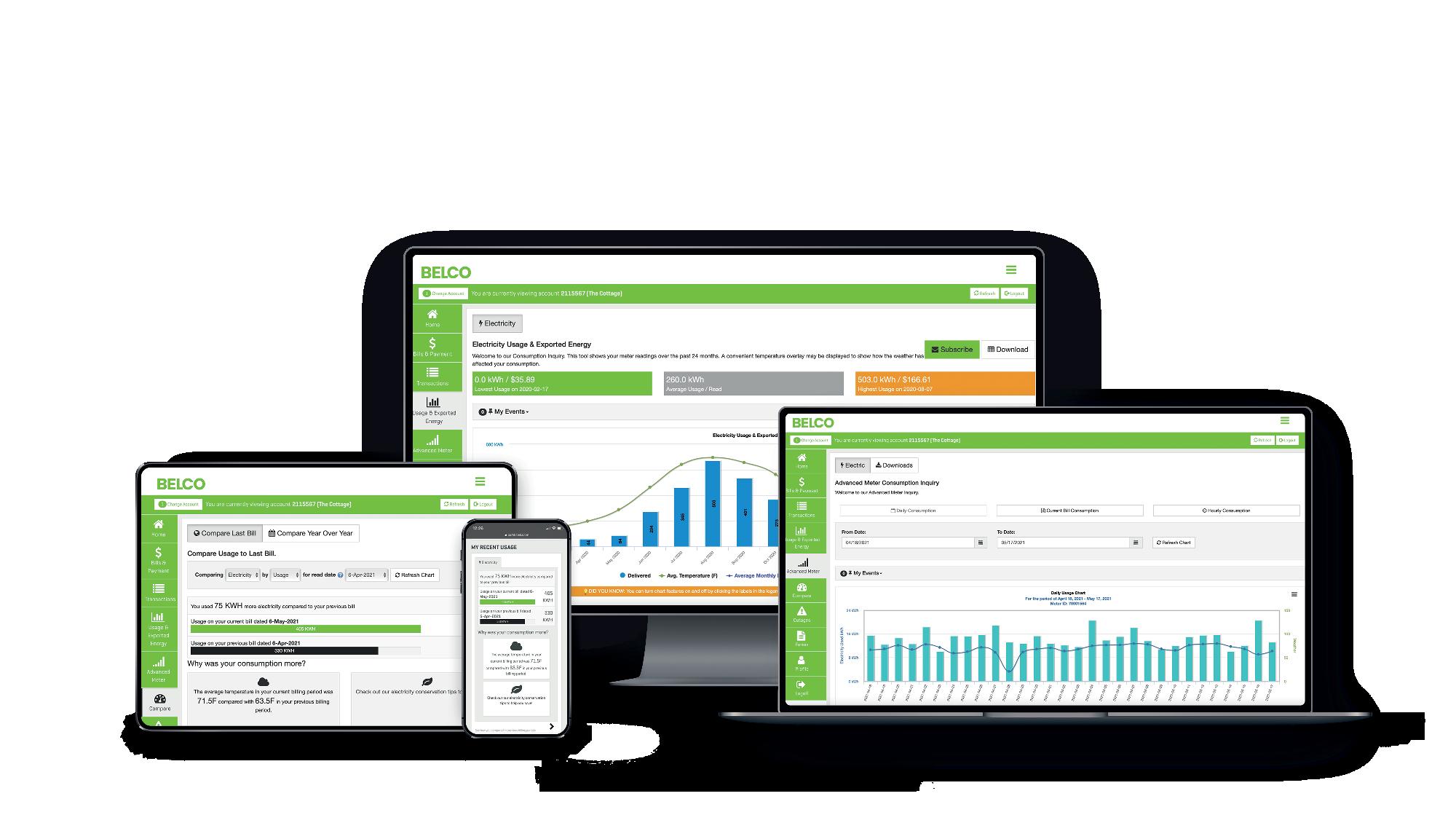

Switch & Save!
Paper production uses enormous amounts of energy and water. It’s a major cause of deforestation, carbon emissions and climate change.
BELCO is committed to sustainability, which includes changing our business practices. We’re reducing our paper use and you can help.
25,484
SWITCH to paperless billing. It’s easy! Sign up on our website or email info@belco.bm.
SAVE trees, energy and water. We can all do our part to reduce carbon emissions for a more sustainable planet.
10,600
By working together, we can make a sustainable difference. belco.bm
Bills distributed monthly = 36,084
295.5111
|
*As of January 1, 2024 Electronic Billing Paper Billing



























 GOVERNMENT OF BERMUDA Ministry of Public Works
GOVERNMENT OF BERMUDA Ministry of Public Works









































































